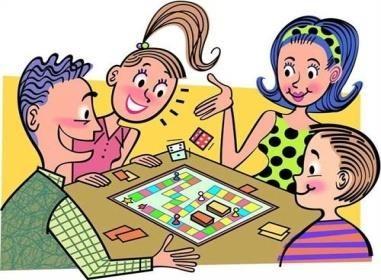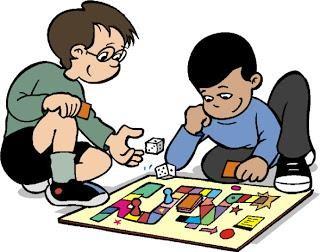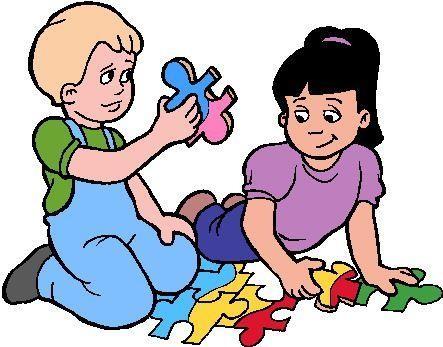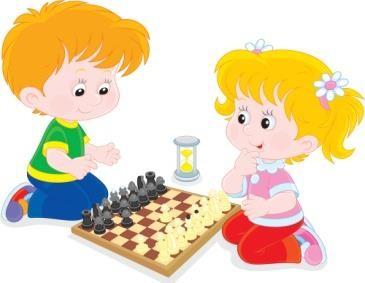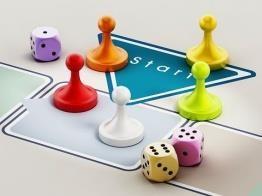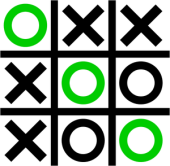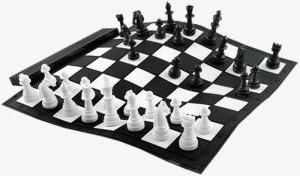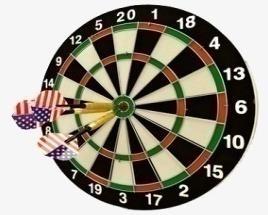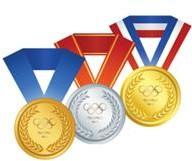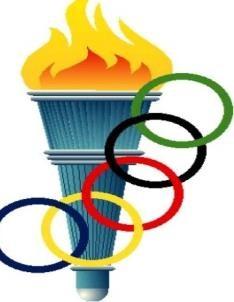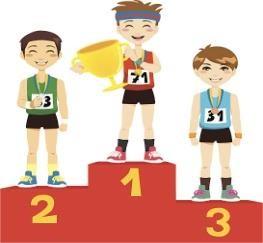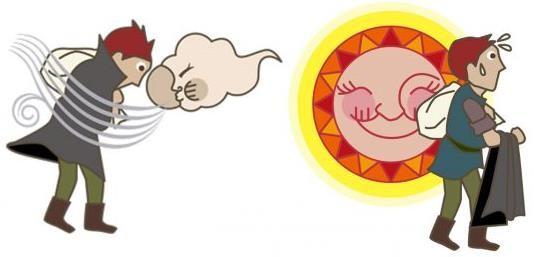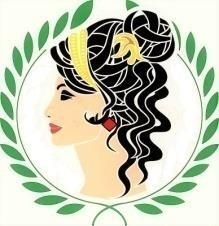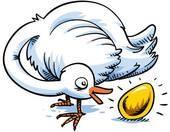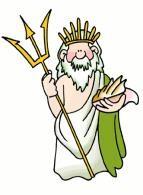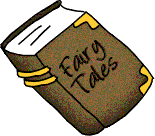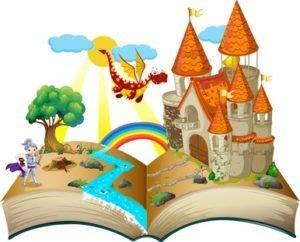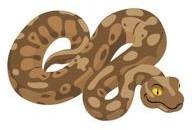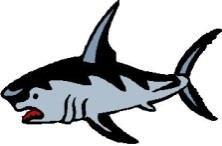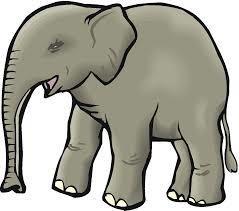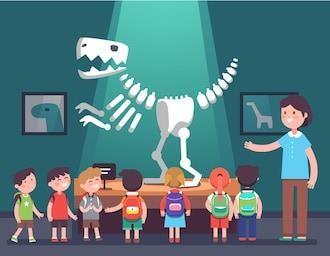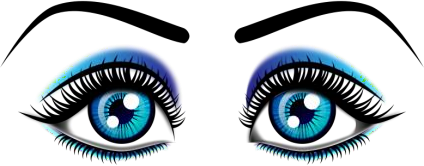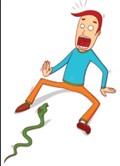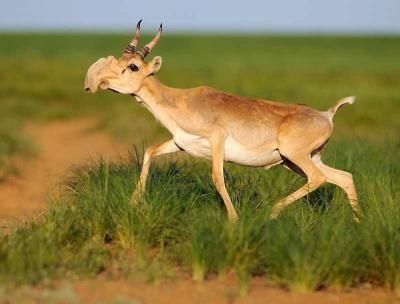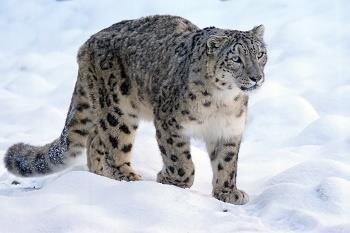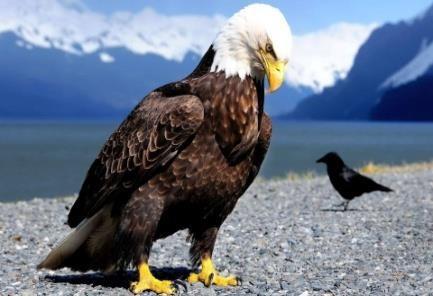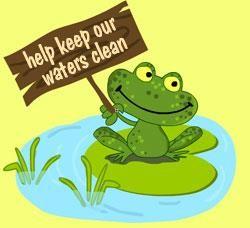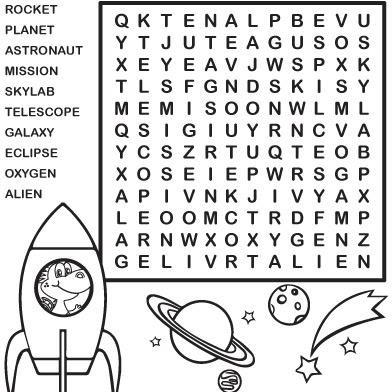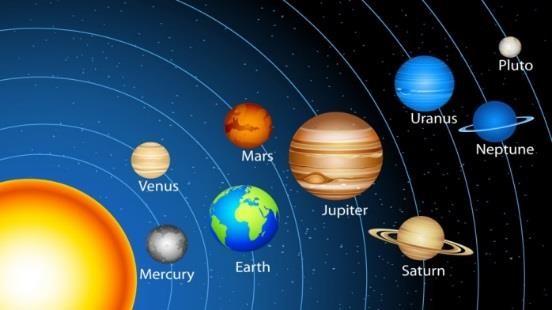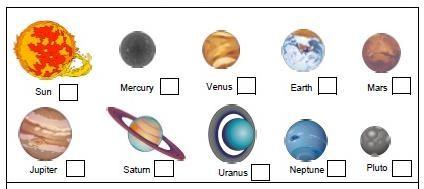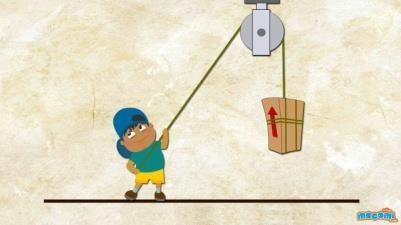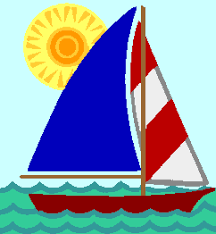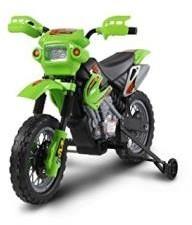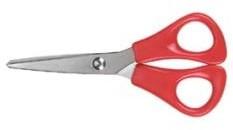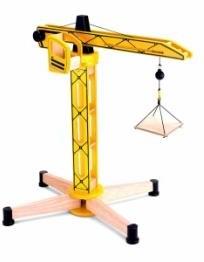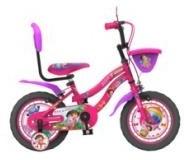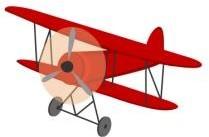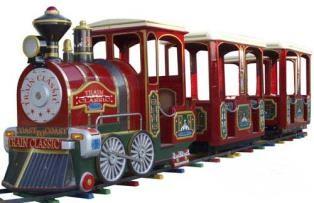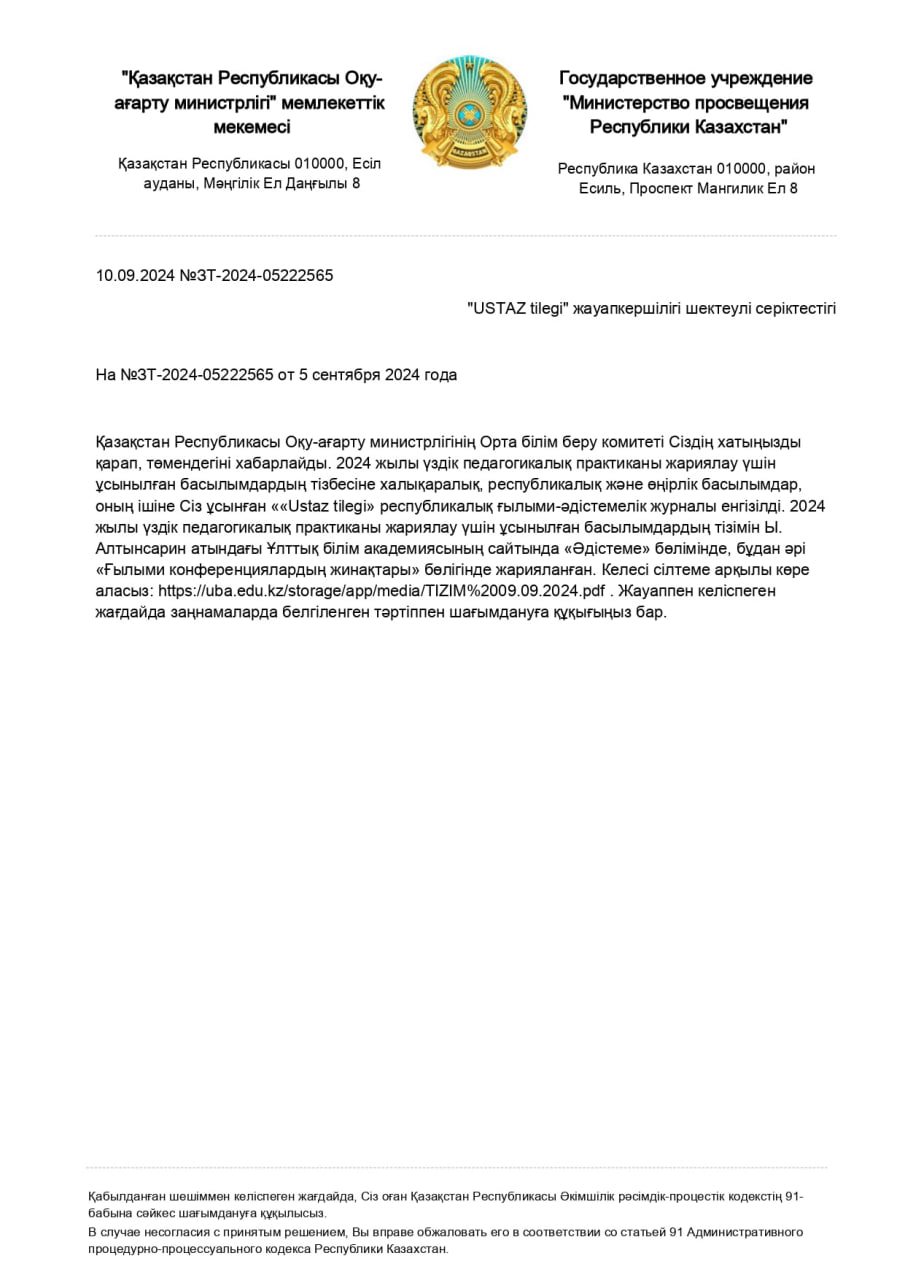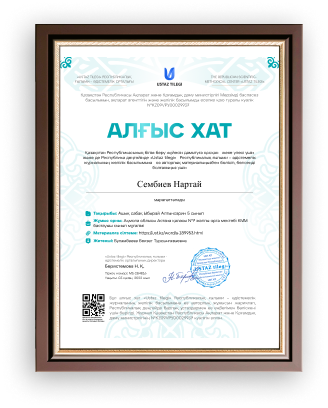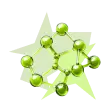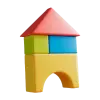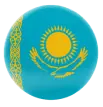
A collection of tasks for Formative Assessment on the subject «The English language»
Grade 4
CONTENTS
Cross curricular unit 1. Kazakhstan in the World of Sport 4
Cross curricular unit 2. Values in Myths and Legends 13
Cross curricular unit 3. Treasure and Heritage 25
Cross curricular unit 4. Professions and Ways of Communication 33
Cross curricular unit: Hot and Cold 41
Cross curricular unit: Healthy World 54
Cross curricular unit: Journey into space 68
Cross curricular unit: Machines 76
TERM 1
Cross curricular unit 1. Kazakhstan in the World of Sport
|
Topic |
Children’s games |
|
Learning objectives |
4.1.2.1 Understand an increasing range of supported questions which ask for personal information 4.2.4.1 Respond to questions on an increasing range of general and some curricular topics 4.5.17.1 Use me, too and I don’t to give short answers; use when clauses to describe simple present and past actions on personal and familiar topics |
|
Assessment criteria |
|
|
Level of thinking skills |
Knowledge and comprehension Application |
|
Task. Ask and answer questions about children’s games in different countries. Use pictures to make up questions.
Example: T - Teacher S - Student T: Do you know where ‘limbo’ game is from? S: Yes, I do. It is from Trinidad and Tobago. T: Do you know where Trinidad and Tobago is? S: Yes, I know. It is in South America. T: Do you like to play ‘limbo’? S: Yes, I do. / No, I don’t. T: Me, too/ I don’t. |
|
|
Descriptor: |
A learner
|
|
Topic |
Children’s games |
|
Learning objective |
4.4.4.1 Write with support a sequence of short sentences in a paragraph to give basic personal information |
|
Assessment criteria |
|
|
Level of thinking skills |
Application |
|
Task. Write a paragraph in 3-5 sentences to describe one of the pictures. Give some basic personal information.
Example: There are many board games. I know Scrabble, chess and Snakes and ladders. My family is playing a board game. We like to play chess with my father. It is my favourite game.
|
|
|
Descriptor: |
A learner
|
|
Topic |
Children’s games |
|
Learning objective |
4.2.4.1 Respond to questions on an increasing range of general and some curricular topics |
|
Assessment criteria |
|
|
Level of thinking skills |
Application |
|
Task. Look at the pictures and make up questions about them. Ask and answer your partner’s questions.
Example: S 1 - Student 1 S 2 – Student 2
S 1: What do you need to play chess? S 2: I need chess pieces. S 1: Do you like to play chess? S 2: Yes, I do./ No, I don’t.
|
|
|
Descriptor: |
A learner
|
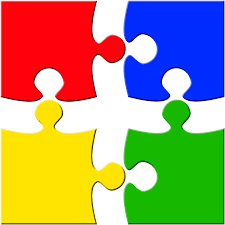
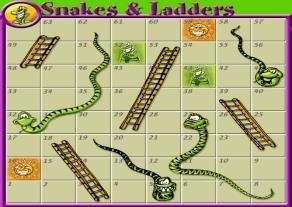
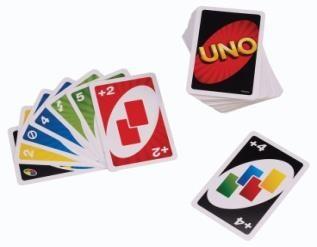
|
Topic |
Olympic games |
|
Learning objective |
4.1.4.1 Understand an increasing range of short supported questions on general and some curricular topics |
|
Assessment criteria |
|
|
Level of thinking skills |
Knowledge and comprehension |
|
Task.You will listen to a man speaking about sports. Underline the correct answer.
Go to the link: https://listenaminute.com/s/sport.html Teacher can read the transcript below.
Example: Is the man very good at sport? – Yes, he is./ No, he is not.
Transcript Are you good at sport? I’m not, but I love watching and playing all kinds of sport. My favourite sport is football – the kind with the round ball, not American football. I wasn’t very good at football when I was a kid. This did not stop me playing. I played in the park with my friends for hours every day. What is your national sport? Do you like it? I love Japan’s national sport sumo. It is one of the most exciting sports in the world. You have to spend a little time getting to know the rules and the fighters. The greatest thing about sport is that it brings people together from all over the world. Another good thing is that it keeps us healthy. Sports stars are very lucky. They love their job and stay fit by doing it every day. What are you going to play next? |
|
|
Descriptor: |
A learner
|
|
Topic |
Olympic games |
|
Learning objective |
4.2.4.1 Respond to questions on an increasing range of general and some curricular topics |
|
Assessment criteria |
|
|
Level of thinking skills |
Knowledge and comprehension Application |
|
Task. Read the text.
Tonight is the big hockey game. Bill has a blue helmet and blue skates. The hockey puck drops. The game begins. Bill skates very fast and gets the puck with his stick. He skates up the ice and shoots it towards the net. The puck goes inside the net. GOAL! Bill’s team wins the game!
Answer the questions.
|
|
|
Descriptor: |
A learner
|
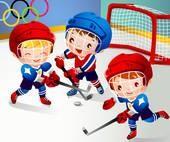
|
Topic |
Olympic games |
|
Learning objective |
4.4.1.1 Plan, write and check sentences with support on a range of basic personal, general and some curricular topics |
|
Assessment criteria |
|
|
Level of thinking skills |
Application |
|
Task. Look at the pictures and choose ONE. Plan and write a paragraph describing the picture.
Use words: Olympic torch, Olympic rings, medals, champion, winner, first place, the Cup. |
|
|
Example: Picture 1.
Plan:
Writing These are Olympic medals. There are three Olympic medals. They are gold, silver and bronze. Olympic champions have only gold medals and sometimes silver medals.
1. 2. 3.
4. 5. 6. |
|
|
Descriptor: |
A learner
|
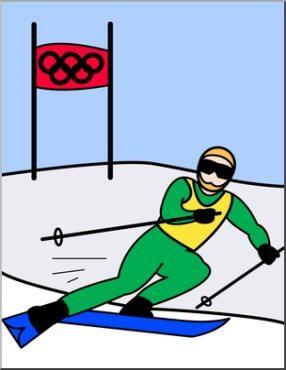
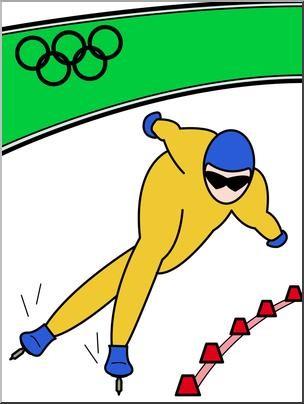
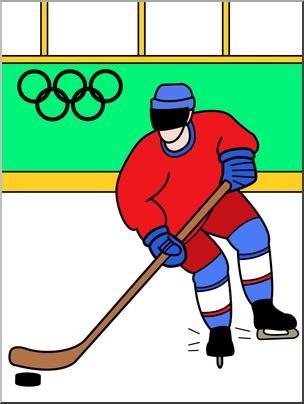
|
Topic |
Aesop’s Fables |
|
Learning objective |
4.1.8.1 Understand short, supported narratives on an increasing range of general and some curricular topics |
|
Assessment criteria |
|
|
Level of thinking skills |
Knowledge and comprehension |
|
Task. Listen to the story about the Sun and the Wind. Mark the sentences True and False. Follow the link https://www.youtube.com/watch?v=0GGvRtuxglM
Transcript The Sun and the Wind One day the Wind approached the Sun and asked: “Hey, Sun, who do you think is the strongest in the world? It's me, the Wind. Ha – ha – ha!” “Ha – ha - ha, oh, really?!” - The Sun chuckled. “If you don't believe me, let's bet on it. Ha – ha – ha, “ Just then they saw a man walking through the field. “See that man. Whoever can make him take off his jacket wins!” As soon as the Wind said that he started to blow as hard as he could. "That's strange! Why is the wind so strong today!", the man held on to his jacket tightly.The Wind blew harder and harder, but the stronger the Wind blew the tighter the man held on to his jacket. "Oh, oh! I'm too tired! Ha- ha- ha! I can't blow anymore! Oh- oh!" As soon as the Wind stopped the Sun came out. "Ok, then it's my turn now! Watch this!" The Sun laughed and started to shine as bright as she could. "Huh, why is it suddenly so hot?! Oh, it's too hot! Oh, oh!", the man started to undo one button, then another and another, but it was still too hot. So he took off his jacket and threw it aside. "Oh, ah, it's too hot!" "See that, Wind, you embarrassed yourself by trying to show off!" The Wind became so embarrassed that he blew away. |
|
|
Descriptor: |
A learner
|
Topic Aesop’s Fables
Learning objective 4.2.8.1 Express basic likes and dislikes; recount short, basic
stories and events on a limited range of general and some curricular topics
Assessment criteria ∙ Talk about likes and dislikes
-
Retell short stories and events on different topics
Level of thinking skills Knowledge and comprehension
Task. Match the sentences to the pictures. Retell the fable “The Lion and the Mouse” and tell whether you like the story or not.
-
1. This soon wakened the Lion, who placed his huge paw upon him, and opened his big jaws
to swallow him.
2. Just, then the little Mouse happened to pass by, and seeing the sad situation, in which the
Lion was, went up to him and soon bit away the ropes that bound the King of the Beasts. “Was I not right?” said the little Mouse.
3. Sometime after hunters caught the Lion in a trap, and they wanted to carry him alive to the
King, tied him to a tree while they went in search of a wagon to carry him on.
4. “Pardon, O King,” cried the little Mouse: “forgive me this time, I shall never forget it: who knows but what I may be able to do you a turn some of these days?” The Lion laughed at the
idea of the Mouse being able to help him that he lifted up his paw and let him go.
5. Little friends may become great friends.
6. Once, when a Lion was asleep a little Mouse began running up and down upon him.
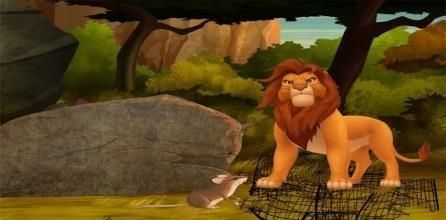
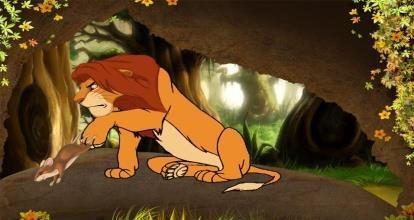
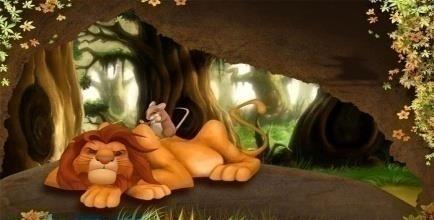
-
-
-
A.
C.
E.
B.
D.
F.
-
-
Descriptor: A learner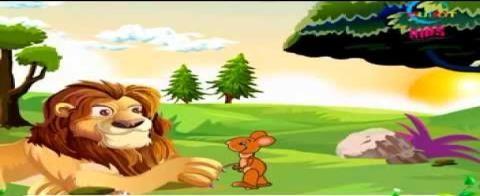
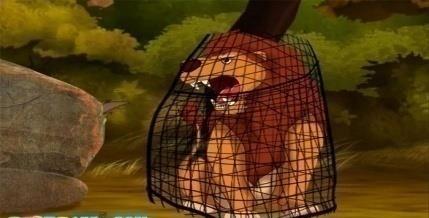
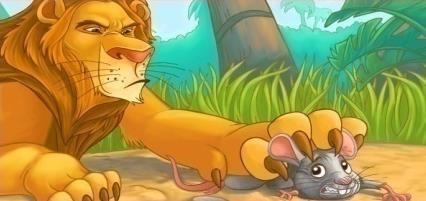
-
reads the sentences;
-
matches the sentences to the pictures correctly;
-
recounts the story in a meaningful way;
-
expresses likes or dislikes.
|
Topic |
Aesop’s Fables |
|
Learning objective |
4.3.3.1 Recognise basic opinions in short, simple texts on an increasing range of general and some curricular topics |
|
Assessment criteria |
|
|
Level of thinking skills |
Knowledge and comprehension |
|
Task. Read the fable.
The Tortoise and the Hare A speedy Hare bragged about how fast he was. Tired of him boasting, Slow and Steady, the Tortoise, challenged him to a race. All the animals in the forest gathered to watch. Hare ran down the road and then decided to rest. He looked back at the Tortoise and cried out, "How do you expect to win this race when your pace is very slow?” Hare stretched himself out alongside the road and fell asleep, thinking, "There is plenty of time to relax." The Tortoise walked and walked. He never, ever stopped and came to the finish line. The animals cheered so loudly for Tortoise, that they woke up Hare. Hare yawned, and began to run, but it was too late. Tortoise was over the line.
Answer the questions in full sentences.
|
|
|
Descriptor: |
A learner
|
Cross curricular unit 2. Values in Myths and Legends
|
Topic |
Traditional stories |
|
Learning objectives |
4.2.2.1 Ask questions to find out about present and possibly past experiences on an increasing range of general and some curricular topics 4.5.15.1 Use would you like to to invite and use appropriate responses yes please, no thanks; use let’s + verb; verbs go, enjoy, like + verb + ing; begin use infinitive of purpose to describe simple actions and verbs want, start + infinitive; use declarative what [a/an] + adjective + noun to show feelings |
|
Assessment criteria |
|
|
Level of thinking skills |
Knowledge and comprehension Application |
|
Task. Look at the pictures and answer the questions. Use “I would like to”, “go/ enjoy/ like + verb + ing”, “what [a/an] + adjective + noun”.
Example: Teacher: Do you like listening to stories? Student: Yes, I do. I like listening to stories./ No, I don’t. I like writing stories.
Task 2. Look at the pictures and make up sentences. Write them. Follow the example.
Example: Would you like to read my book? - Yes, please. / No, thanks. Do you want to fly on a magic carpet? - Yes, I do. / No, I don't. |
|
Descriptor:
Task 1
Task 2
A learner
-
expresses opinion by using “I would like to”, “go/ enjoy/ like
+ verb + ing”, “what [a/an] + adjective + noun”;
-
answers questions correctly;
-
writes sentences using would you like to to invite and writes appropriate answers yes please, no thanks;
-
starts using verbs want and start +infinitive.
|
Topic |
Traditional stories |
|
Learning objective |
4.1.4.1 Understand an increasing range of short supported questions on general and some curricular topics |
|
Assessment criteria |
|
|
Level of thinking skills |
Knowledge and comprehension |
|
Task. Listen to the story and choose the correct answer.
Follow the link: https://www.youtube.com/watch?v=waw0U9tKpW0
Transcript Once upon a time there was a Prince who wanted to marry a Princess, but she would have to be a real Princess. He traveled all over the world to find one but nowhere could he get what he wanted. There were princesses enough but it was difficult to find out whether they were real ones. There was always something about them that was not as it should be, so he came home again and was sad for he would have liked very much to have a real princess. One evening a terrible storm came on. There was thunder and lightning and the rain poured down in torrents. Suddenly a knocking was heard at the city gate and the old King went to open it. It was a princess standing out there in front of the gate but “good gracious!” what a sight the rain and the wind had made her look: the water ran down from her hair and clothes, it ran down into the toes of her shoes and out again at the heels, and yet she said that she was a real princess. “Well, |
|
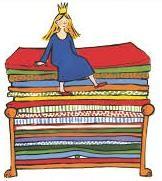
|
we'll soon find that out!”, thought the old Queen but she said nothing, went into the bedroom, took all the bedding off the bedstead and laid a pea on the bottom, then she took 20 mattresses and laid them on the pea and then 20 eiderdown beds on top of the mattresses. On this the princess had to lie all night. In the morning she was asked how she had slept. “Oh, very badly said she, “I have scarcely closed my eyes, all night, heaven only knows, what was in the bed but I was lying on something hard so that I am black and blue all over my body. It's horrible!” Now they knew that she was a real princess because she had felt the pea right through the 20 mattresses and the 20 eiderdown beds. Nobody but a real princess could be as sensitive as that. So the prince took her for his wife, for now he knew that he had a real princess and the pea was put in the museum where it may still be seen if no one has stolen it there. That is a true story. |
|
|
Descriptor: |
A learner
|
|
Topic |
Traditional stories |
|
Learning objectives |
4.4.1.1 Plan, write and check sentences with support on a range of basic personal, general and some curricular topics 4.5.3.1 Use adjectives, including possessive adjectives, on a growing range of general and some curricular topics to describe things; use simple one-syllable and some two- syllable adjectives [comparative and superlative] to make comparisons |
|
Assessment criteria |
|
|
Level of thinking skills |
Application |
|
Task. Look at the pictures. Use a plan to describe the picture. Use adjectives and make comparisons.
Example: Plan:
Writing: There are children in the picture. There is a magic carpet in the picture.The children are flying. The boys are happy but the girl is scared. The magic carpet is beautiful and fast. It is the fastest carpet in the world. |
|
|
Descriptor: |
A learner
|
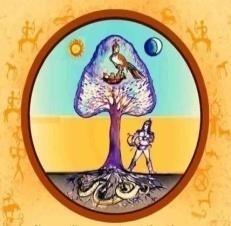
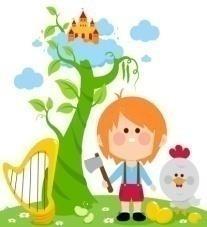
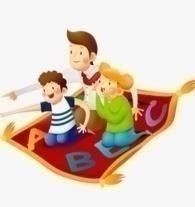
|
Topic |
People and places |
|
Learning objective |
4.1.8.1 Understand short, supported narratives on an increasing range of general and some curricular topics |
|
Assessment criteria |
|
|
Level of thinking skills |
Knowledge and comprehension |
|
Task. Listen to the story twice. Underline True and False for the sentences.
Follow the link: http://learnenglishkids.britishcouncil.org/en/short-stories/the-princess-and-the- dragon?destination=node%2F2042
Example: Once upon a time, a king and queen lived in a golden castle. True False
|
|
|
Descriptor: |
A learner
|
|
Topic |
People and places |
|
Learning objective |
4.3.5.1 Understand the main points of short simple texts on a growing range general and some curricular topics by using contextual clues |
|
Assessment criteria |
|
|
Level of thinking skills |
Knowledge and comprehension |
|
Task. Read 10 sentences and put them in a right order. Write the numbers next to the sentences The 1stsentence is marked for you.
Come with me, princess, don’t be scared! My pleasure, princess. We’ll save the princess. 1 Help me! Please, save our princess. Thank you for saving me. Help me! Whee! I can fly. My pleasure. Thank you for saving our princess. |
|
|
Descriptor: |
A learner
|
Topic People and places
Learning objective 4.5.3.1 Use adjectives, including possessive adjectives, on a
growing range of general and some curricular topics to describe things; use simple one-syllable and some two- syllable adjectives [comparative and superlative] to make comparisons
Assessment criteria ∙ Describe things using different adjectives and possessive
adjectives
-
Make comparison using simple one-syllable and some two- syllable adjectives [comparative and superlative]
Level of thinking skills Application
Task 1. Read the adjectives and match them to the pictures. Make up sentences.
Example:
The
King and the Queen are very
happy.

-
-
1. happy
A.
2. ugly, scary
B.
3. beautiful
C.
4. friendly, strong
D.
5. golden
E.
-
Task
2.
Look at
the pictures and the adjectives in the box. Write a sentence for
each of the pictures and make up comparatives or
superlatives.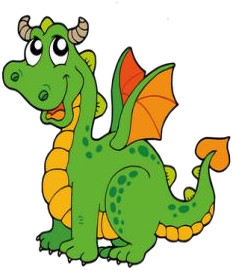
Example: Mary is more beautiful than
Anne.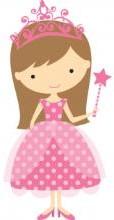
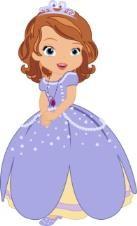
-
-
beautiful
Mary
Anne
kind
Blue Dragon
Green Dragon
long
Susan
Rose
ugly
Jack
Jim
tall
Silver Castle
Golden Castle
-
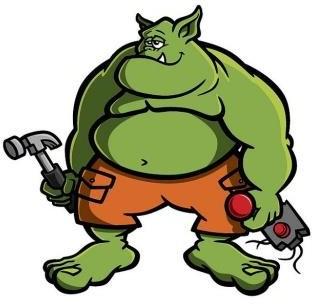
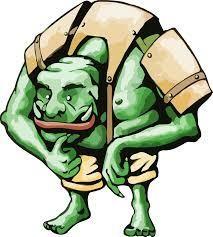
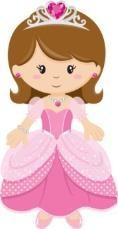
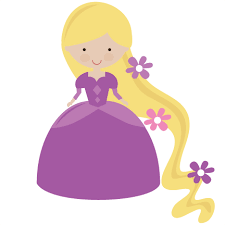
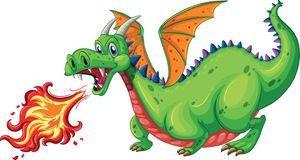
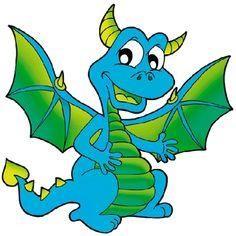 Descriptor:
Descriptor: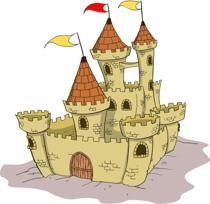
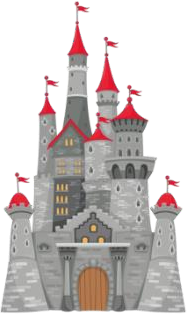
Task 1
Task 2
A learner
-
matches the adjectives to the pictures correctly;
-
makes up sentences with comparatives or superlatives;
-
writes comparative and superlative sentences;
-
uses pictures and given words from the table.
|
Topic |
|
Dragons and creatures |
|
Learning objectives |
|
4.4.7.1 Spell most familiar high-frequency words accurately when writing independently 4.5.1.1 Use singular nouns, plural nouns – including some common irregular plural – and uncountable nouns, possessive ‘s/s’ to name, describe and label things |
|
Assessment criteria |
|
|
|
Level of thinking skills |
Application |
|
|
Task. Label the Red dragon. Complete the sentences about it. Pay attention to the spelling.
Example: This is the Red dragon.
3
4
5 6 |
||
|
Descriptor: |
A learner
|
|
![]()

|
Topic |
Dragons and creatures |
|
Learning objective |
4.5.16.1 Use conjunctions and, or, but, because to link words and phrases |
|
Assessment criteria |
|
|
Level of thinking skills |
Application |
|
Task Describe a dragon. Put and, and, or, but, because.
|
|
|
Descriptor: |
A learner
|
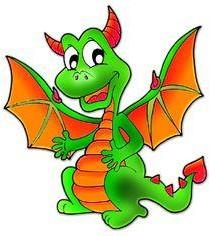
|
Topic |
Dragons and creatures |
|
Learning objectives |
4.2.4.1 Respond to questions on an increasing range of general and some curricular topics 4.2.6.1 Take turns when speaking with others in a growing range of short, basic exchanges |
|
Assessment criteria |
|
|
Level of thinking skills |
Knowledge and comprehension Application |
|
Task. Choose a partner and ask questions. In turn, respond to his/ her questions. Pictures will help you.
|
|
|
Descriptor: |
A learner
|
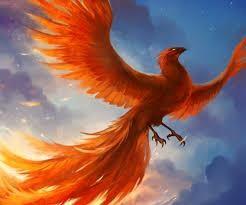
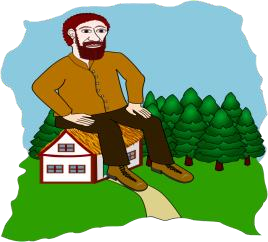
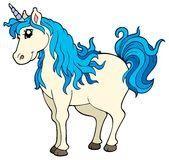
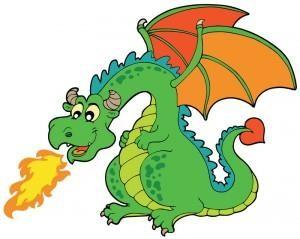
TERM 2
Cross curricular unit 3. Treasure and Heritage
|
Topic |
Treasure maps |
|
Learning objectives |
4.1.3.1 Understand the main points of short supported talk on an increasing range of general and some curricular topics 4.2.6.1 Take turns when speaking with others in a growing range of short, basic exchanges |
|
Assessment criteria |
|
|
Level of thinking skills |
Knowledge and comprehension Application |
|
Task 1. Listen to the story. Answer the questions. Go to this link:http://learnenglishkids.britishcouncil.org/en/short-stories/the-treasure-map Teacher can read the transcript below.
Example: Did Sanjay see a bottle in the sea? - Yes, he did.
Task 2. Choose a partner and tell your story about the treasure map. You may use pictures, words and expressions or sentences from Task 1 to support your story.
bottle, coded message, treasure map, found, it said, in the ocean, gold, jewels, silver, pirate, island. |
|
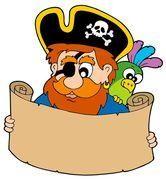
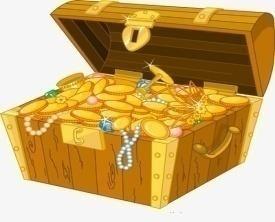
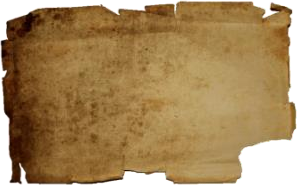
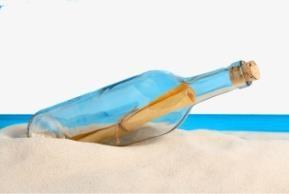
Transcript
Sanjay saw a bottle floating in the sea. There was something inside it. He took it out. ‘What is it?’ asked Sarah. ‘It’s a map! It’s a map!’ They looked round and saw a talking parrot. ‘Buried treasure! Buried treasure!’ ‘Wow! A treasure map! Let’s follow it.’ ‘Maybe it’s gold!’ ‘Or silver?’ ‘Or jewels?’ ‘OK. We are here and the treasure is here.’ ‘Let’s go! I’ll read,’ said the parrot. ‘Walk 80 meters north.’ ‘1, 2, 3 … 78, 79, 80.’ ‘Turn right at the big coconut tree and go straight on until the crocodile pond. Cross the bridge, turn to the left and keep walking. Turn right in front of the big, round rock. Walk straight ahead for 50 meters.’ ‘1, 2, 3 … 48, 49, 50.’ ‘Go through the cave. Mind the bats! Mind the bats! Walk straight on until the beach. Go along the beach for 200 meters. The treasure is behind the square rock. ‘Over there! Over there!’ Parrot shouted. ‘It’s empty!’ cried Sarah. Inside there was an old note. Dear Finder, Sorry, but I took my gold. I needed to buy a new pirate ship. Bye, Captain Redbeard. ‘Well, at least we had a nice walk,’ said Sanjay. ‘Yes, and we made a new friend!’
|
Descriptor: Task 1 Task 2 |
A learner
|
|
Topic |
Treasure maps |
|
Learning objective |
4.4.1.1Plan, write and check sentences with support on a range of basic personal, general and some curricular topics 4.5.14.1 Use prepositions of location, position and direction: at, in, on, behind, between, in front of, near, next to, opposite, above, up, down, on the right, on the left; use prepositions of time: in, on, at, before, after; use with / without to indicate; accompaniment with for instrument and for to indicate recipient |
|
Assessment criteria |
|
|
Level of thinking skills |
Application |
|
Task. Imagine you are a pirate. Look at the map. There is an ‘X’ to show where your treasure is. Write directions to find your treasure! Use prepositions at, in, on, behind, between, in front of, near, next to, opposite, above, up, down, on the right, on the left. Check your sentences.
Example: 1. Come ashore.
|
|
|
Descriptor: |
A learner
|
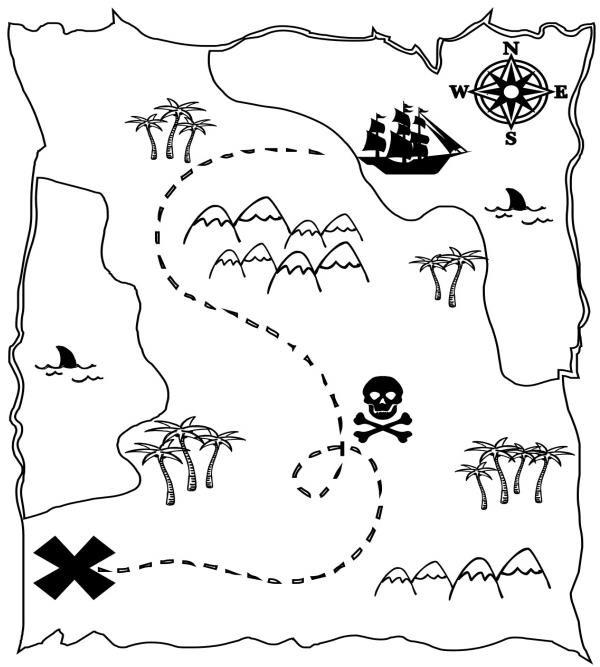
|
Topic |
Treasure and numbers |
|
Learning objective |
4.2.5.1 Pronounce an increasing range of words, short phrases and simple sentences intelligibly |
|
Assessment criteria |
|
|
Level of thinking skills |
Application |
|
Task. Name the objects and tell their coordinates.
Example: The octopus is 1 – 1.
|
|
|
Descriptor: |
A learner
|
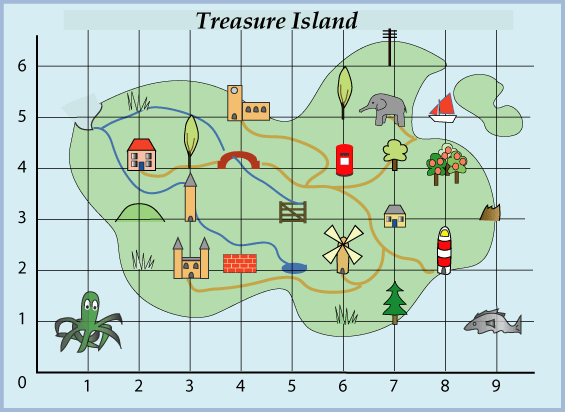
|
Topic |
Treasure and numbers |
|
Learning objective |
4.2.5.1 Pronounce an increasing range of words, short phrases and simple sentences intelligibly 4.5.5.1 Use interrogative pronouns who, what and where, how many, how much, how often, how big, what kind of to ask questions on growing range of familiar topics |
|
Assessment criteria |
|
|
Level of thinking skills |
Application |
|
Task. Look at the picture and make up 7 questions. Use who, what and where, how many, how much, how often, how big, what kind of. You can use: Shark Reef, Pirate Cove, Lava Rock, Alligator alley.
Example: Where is the Shark Reef? |
|
|
Descriptor: |
A learner
|
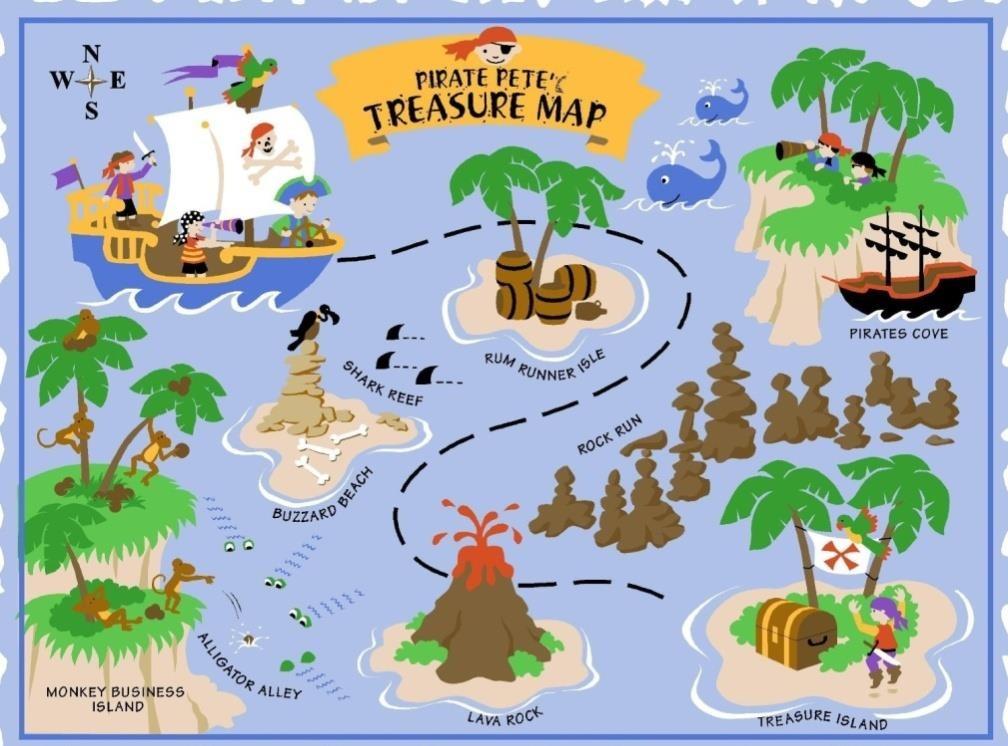
|
Topic |
Our planet’s treasure |
|
Learning objectives |
4.2.3.1 Give short, basic description of people and objects on a limited range of general and some curricular topics; begin to describe past experiences on an increasing range of general and some curricular topics 4.4.4.1 Write with support a sequence of short sentences in a paragraph to give basic personal information |
|
Assessment criteria |
|
|
Level of thinking skills |
Application |
|
Task 1. Look at the picture and talk to your partner. Describe people and objects in it.
Example: This is a museum. You can see sceletons of dinosaurs at the museum. There are children and a teacher in the picture. There is a sceleton of T-Rex at the museum.
Task 2. Write sentences to describe the picture.
Example: It was Sunday. The children went to the museum. There was a teacher and seven pupils. The saw a sceleton of dinosaur. It is big sceleton. It has got white colour. Children like to go to the mesuem.
Descriptor: A learner Task 1 ∙ works in pairs and describes people and objects in the picture; Task 2 ∙ describes the picture in written form;
|
|
|
Topic |
Our planet’s treasure |
|
Learning objective |
4.1.8.1 Understand short, supported narratives on an increasing range of general and some curricular topics 4.2.8.1 Express basic likes and dislikes; recount short, basic stories and events on a limited range of general and some curricular topics |
|
Assessment criteria |
|
|
Level of thinking skills |
Knowledge and comprehension Application |
|
Task 1. Listen to the story and put the sentences in right order. You will listen twice. The first sentence is marked for you as an example.
Follow the link to listen to the story: https://learnenglishkids.britishcouncil.org/en/short- stories/dinosaur-dig
She picked up a golden bone that was hidden under a bush. ‘What will happen if the dinosaur catches us?’ ‘Well, the game is over!’ 1_ It was Sonia’s birthday. She had a new game. Sonia was at home, sitting at her computer. ‘Hmmm. Maybe I’ll play a different game.’ ‘You’re in Dinosaur Dig. We have to find old dinosaur bones.’ They heard a dinosaur roar. Sonia and the boy hid behind a bush. She decided to try her new game. She clicked on the icon. There was the same icon that she saw on her computer. Sonia touched the icon.
Task 2. Now retell the story. Use the above sentences.
Answer the questions:
|
|
|
Descriptor: Task 1
Task 2 |
A learner
|
|
Topic |
Our planet’s treasure |
|
Learning objectives |
4.3.5.1 Understand the main points of short simple texts on a growing range general and some curricular topics by using contextual clues 4.5.5.1 Use interrogative pronouns who, what and where, how many, how much, how often, how big, what kind of to ask questions on growing range of familiar topics |
|
Assessment criteria |
|
|
Level of thinking skills |
Knowledge and comprehension Application |
|
Task. Read the story and ask questions. Use who, what and where, how many, how much, how often, how big, what kind of.
Example: Who got a birthday gift?
It was Sonia’s birthday. She had a new game ‘Dinosaur Dig!’ This was what she wanted. She switched on the computer. A strange icon appeared. Sonia clicked on the icon. FLASH! She was in Dinosaur Dig. There was a boy. She picked up a golden bone that was hidden under a bush. ‘No!’ shouted the boy. ‘You mustn’t pick the golden ones up! Now watch out for the dinosaur!’ Suddenly they heard a noise. The ground began to shake. They heard a roar. ‘RUN!’ Sonia and the boy ran fast through the bushes. There was the same icon that she saw on her computer. Sonia touched it. FLASH! Sonia was at home. |
|
|
Descriptor: |
A learner
|
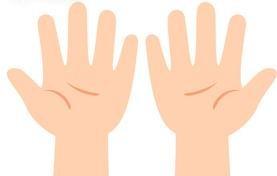

 Cross curricular unit 4. Professions and Ways of Communication
Cross curricular unit 4. Professions and Ways of Communication
|
Topic |
Body language |
|
Learning objectives |
4.1.1.1 Understand an increasing range of classroom instructions 4.2.1.1 Make basic statements which provide information on an increasing range of general and some curricular topics |
|
Assessment criteria |
|
|
Level of thinking skills |
Knowledge and comprehension Application |
|
Task 1. Listen to the teacher and react to commands using body language. Teacher reads the commands:
Task 2. Tell about parts of our body that help us to express our emotions/ feelings.
Example: You can rub your nose to show “I think”.
|
|
|
Descriptor: |
A learner
|
|
Topic |
Body language |
|
Learning objectives |
4.2.1.1 Make basic statements which provide information on an increasing range of general and some curricular topics 4.4.2.1 Begin to use joined-up handwriting in a limited range of written work |
|
Assessment criteria |
|
|
Level of thinking skills |
Knowledge and comprehension Application |
|
Task 1. Make up sentences describing pictures. What feelings do they show?
Example:The girl is surprised.
Task 2. Write sentences. Use joined-up handwriting. |
|
|
Descriptor: |
A learner
|
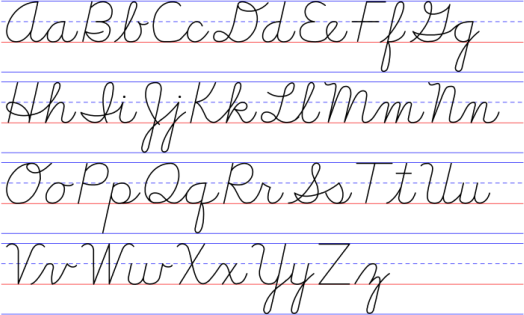
Topic Communicating around the world
Learning objectives 4.1.1.1 Understand an increasing range of classroom instructions
-
Understand the main points of short supported talk on an increasing range of general and some curricular topics
Assessment criteria ∙ Follow classroom instructions
-
Identify the main points of short talk with support
Level of thinking skills Knowledge and comprehension
Task. Listen to the instructions.
Teacher reads the instructions:
-
Listen to a man talking about different professions.
-
Put the number in a small box next to the picture.
-
Then write the name of the profession in a big box. Number 1 is done as an example.
Follow the link: https://www.123listening.com/freeaudio/people1-5.mp3 .
! Listen to 1.40’
-
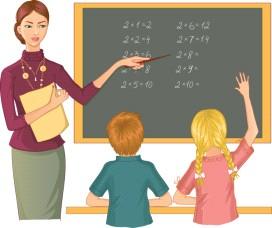
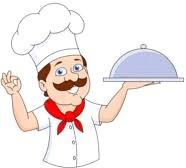

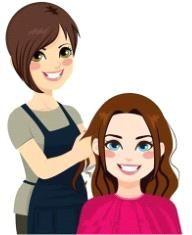


1
doctor
Descriptor: A learner
-
follows instructions;
-
writes the numbers in the boxes under the pictures;
-
writes the names of the professions under the pictures.
Topic Communicating around the world
Learning objectives 4.4.3.1 Write with support short sentences which describe people,
places and objects
-
Use upper and lower case letters accurately when writing names, places and short sentences when writing independently
Assessment criteria ∙ Give information using basic statements
-
Use upper and lower case letters accurately to write names, places and short sentences
Level of thinking skills Knowledge and comprehension
Application
Task. Complete the table and write sentences about countries.
Example: The capital of Kazakhstan is Nur-Sultan. People speak Kazakh.
-
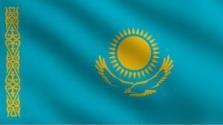

Kazakhstan
Kazakh
Nur-Sultan

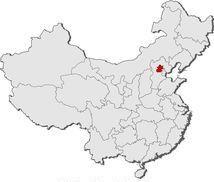
China
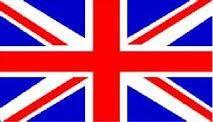
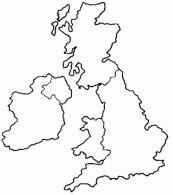
English

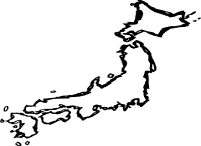
Japan
Descriptor: A learner
-
writes the names of places and languages with the capital letter;
-
writes correct sentences.
|
Topic |
Communicating around the world |
|
Learning objective |
4.3.1.1 Recognise, identify and sound with support a growing range of language at text level |
|
Assessment criteria |
|
|
Level of thinking skills |
Knowledge and comprehension |
|
Task. Read the text. Underline the numbers and pronounce them. Answer the questions.
There are many different languages in the world. All languages have words. Chinese doesn’t have an alphabet. You write characters. Cambodian has the longest alphabet. It has 76 letters. In New Zealand, sign language is an official language. 231 languages are now completely extinct. English is an official language in more than 60 countries.
Descriptor: A learner
|
|
|
Topic |
Technology |
|
Learning objectives |
4.1.2.1 Understand an increasing range of supported questions which ask for personal information 4.4.4.1 Write with support a sequence of short sentences in a paragraph to give basic personal information |
|
Assessment criteria |
|
|
Level of thinking skills |
Knowledge and comprehension Application |
|
Task 1. Look at the pictures and answer the questions.
Task 2. Describe your favourite tech. Write what it is, why it is favourite, who gave you it, how does it help you.
Example: My favourite tech is my iPad. It is my favourite because it is a birthday gift. My Granny gave it to me. It helps me to read books, listen to the music, and find information. |
|
|
Descriptor: Task 1 Task 2 |
A learner
|





|
Topic |
Technology |
|
Learning objectives |
4.2.3.1 Give short, basic description of people and objects on a limited range of general and some curricular topics; begin to describe past experiences on an increasing range of general and some curricular topics 4.5.3.1 Use adjectives, including possessive adjectives, on a growing range of general and some curricular topics to describe things; use simple one-syllable and some two- syllable adjectives [comparative and superlative] to make comparisons |
|
Assessment criteria |
|
|
Level of thinking skills |
Knowledge and comprehension Application |
|
Task. Look at the picture and describe people and objects in it. Use his/her and comparative and superlative adjectives.
Example: This is Tom. He is a 4-th grade student. Tom has a smartphone. His smartphone is new. It is the best phone in his class. |
|
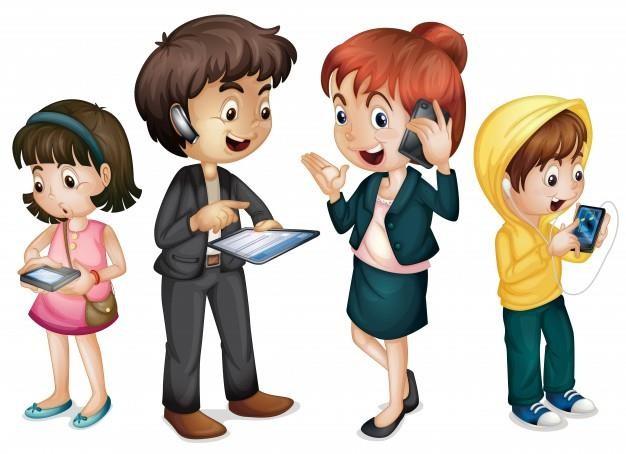
Descriptor: A learner
-
describes people and objects;
-
uses possessive adjectives;
-
uses comparative adjectives;
-
uses superlative adjectives.
|
Topic |
Technology |
|
Learning objective |
4.5.11.1 Use has got/ have got, there is/ are statement, negative, question forms including short and full answers and contractions |
|
Assessment criteria |
|
|
Level of thinking skills |
Application |
|
Task. Look at the picture and describe it. Write positive and negative sentences and questions by using have got, has got, there is, there are.
Example: There are six people in the picture. They have not got iPads. Have paul got a mobile?
Paul
Mary |
|
|
Descriptor: |
A learner
|

 TERM 3
TERM 3
-
Cross curricular unit: Hot and Cold
Topic
Weather
Learning objectives
4.1.9.1 Recognise words that are spelt out from a limited range of general and curriculum topics
4.4.7.1 Spell most familiar high-frequency words accurately when writing independently
Assessment criteria
-
Recognise spelling of words from limited range of topics
-
Write high-frequency words accurately
Level of thinking skills
Knowledge and comprehension Application
Task. Listen to the teacher spelling the word and write the word you hear under the picture.
Teacher reads:
cold hot warm cloudy foggy sunny rainy snowy windy stormy
Go to this link http://learnenglishkids.britishcouncil.org/sites/kids/files/attachment/worksheets- weather-1.pdf
1. cold 2. 3. 4. 5.
6. 7. 8. 9. 10.
Descriptor:
A learner
-
recognises the spelt words;
-
spells the words accurately.
-
|
Topic |
Weather |
|
Learning objectives |
4.3.5.1 Understand the main points of short simple texts on a growing range general and some curricular topics by using contextual clues 4.2.1.1 Make basic statements which provide information on an increasing range of general and some curricular topics |
|
Assessment criteria |
|
|
Level of thinking skills |
Knowledge and comprehension Application |
|
Task 1. Read the text. Match the suggestions to the country.
Here is the forecast for tomorrow’s weather in the UK and Ireland! In Scotland it is snowy and the weather is very cold. In the North of England it is foggy, and in the centre and east it is rainy. In the South and South East of England it is very sunny and hot. In the South West it is warm but rainy. In Wales it is cloudy but warm. In Northern Ireland it is very sunny. In Ireland it is stormy and very windy.
Task 2. Tell about the weather in:
Example: It will be very cold in Ireland. |
|
|
Descriptor: Task1 Task2 |
A learner
|
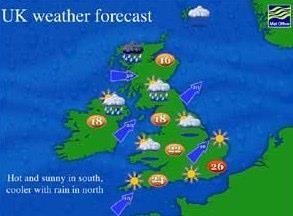
-
Topic
Weather
Learning objectives
4.4.5.1 Link with some support sentences using basic coordinating connectors
4.5.16.1 Use conjunctions and, or, but, because to link words and phrases
Assessment criteria
-
Use and, or, but, because to link words and phrases and sentences
Level of thinking skills
Application
Task. Use the words from the table to complete the sentences.
and and because or but or
-
In the South of Kazakhstan the weather is sunny_ hot in summer.
-
In the North of Kazakhstan it is cold windy in winter.
-
In Astana the weather is hot in summer it is cold in winter.
-
In the East of Kazakhstan the weather is warm hot.
-
In the West of Kazakhstan the weather is warm and rainy windy and hot in summer.
-
In Almaty the weather is warm and sunny it is in the South of Kazakhstan.
Descriptor:
A learner
-
uses conjunctions to link words and phrases;
-
uses conjunctions to connect sentences.
-
![]()
|
Topic |
Weather |
|
Learning objective |
4.2.1.1 Make basic statements which provide information on an increasing range of general and some curricular topics 4.5.10.1 Use common present continuous forms, including short answers and contractions, to talk about what is happening now and future arrangements on a limited range of personal and familiar topics; use –ing forms swimming, spelling as nouns to describe familiar and classroom activities |
|
Assessment criteria |
|
|
Level of thinking skills |
Application |
|
Task. Look at the pictures. Talk to a partner about what is happening (seasons, weather, clothes, activities). Ask and answer the questions.
|
|
|
Descriptor: |
A learner
|
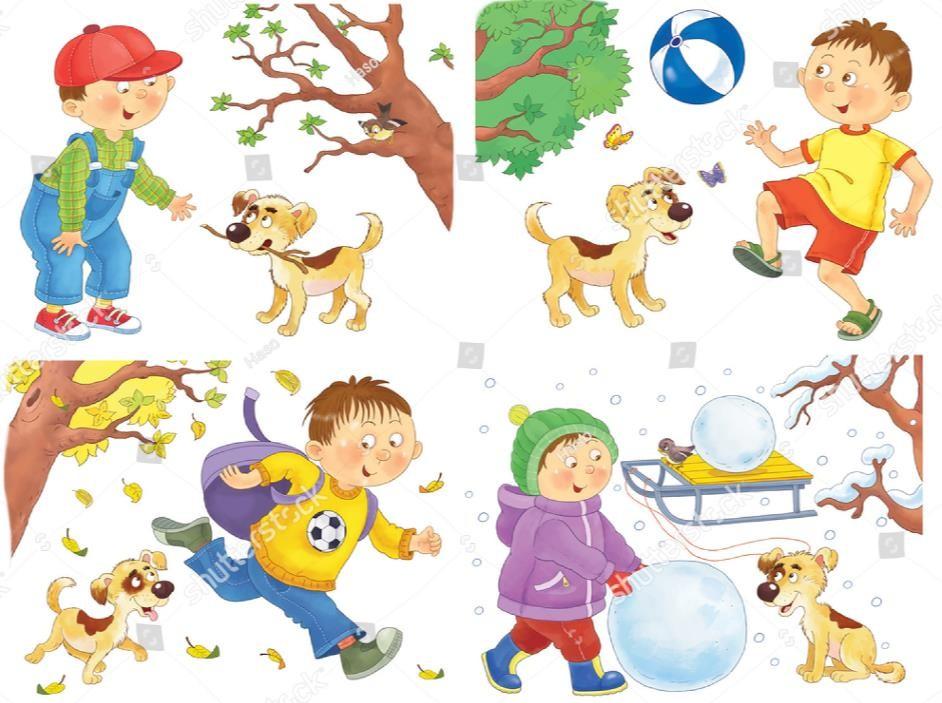
Topic Weather
Learning objectives 4.3.6.1 Understand with some support some specific information
and detail in short, simple texts on a growing range of general and some curricular topics
-
Understand an increasing range of short supported questions on general and some curricular topics
Assessment criteria ∙ Identify detailed information in short text with support
-
Answer short questions with support
Level of thinking skills Knowledge and comprehension
Task. Read the texts. Listen to the teacher’s questions and answer them.
Teacher asks questions after the learners read the texts.
-
How many seasons are there in a year?
-
What are winter/spring/ summer/ autumn months?
-
What is the weather like in winter/spring/ summer/ autumn?
-
What do children like to do in winter/spring/ summer/ autumn?
-
What is the coldest/ hottest season in the year?
-
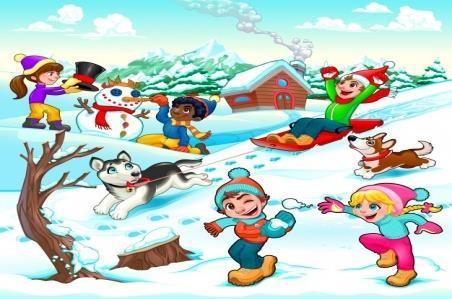
There are four seasons in a year: spring, summer, autumn and winter. December, January and February are winter months. The weather is cold. It usually snows. The days are short and the nights are long. Children like to go skating and skiing. They play snowballs and make a snowman.
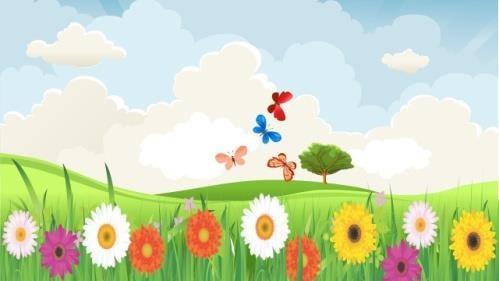
March, April and May are spring months. It is a very nice season. The weather is fine in spring. It is warm. There are many green trees and colourfull flowers in the fields, parks and gardens.Children go far a walk and look
at flowers. Sometimes it rains but usually the sun shines brightly.
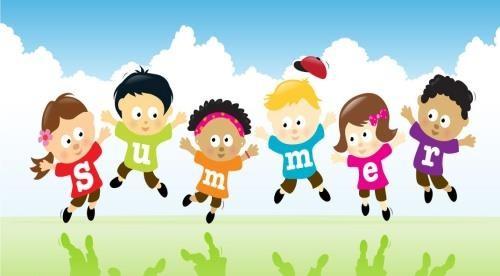
June, July and August are summer months. It is the hottest season. The days are long and the nights are short. There are many beautiful flowers in the parks and squares. The pupils do not go to school, they have their summer holidays. They can swim in the rivers and play different games.
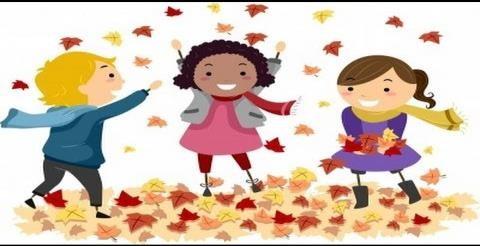
September, October and November are autumn months. The weather is cool. It often rains in autumn. There are yellow, red, brown leaves in the parks and gardens. Children like to play with leaves in autumn.It is time for fruit and vegetables. The children go to school again.
Descriptor: A learner
-
reads the texts;
-
answers the questions about months and weather in different seasons;
-
tells about activities and favourite season;
-
names the hottest and the coldest seasons.
|
Topic |
Weather |
|
Learning objectives |
4.2.2.1 Ask questions to find out about present and possibly past experiences on an increasing range of general and some curricular topics 4.2.4.1 Respond to questions on an increasing range of general and some curricular topics 4.2.7.1 Contribute a growing range of suitable words, phrases, and sentences during short pair, group and whole class exchanges |
|
Assessment criteria |
sentences |
|
Level of thinking skills |
Application |
|
Task. Look at the pictures. Discuss with your partner/ partners about them by asking and answering questions. Teacher can organise learners to work in pairs, small group or as a whole class. Learners should ask each other questions and answer them according to the pictures. They should use simple present and past forms in their talk.
Example:
|
|
|
Descriptor: |
A learner
|
Topic Weather
Learning objectives 4.4.7.1 Spell most familiar high-frequency words accurately
when writing independently
-
To include appropriate use of full stops and question marks, at sentence level with some accuracy when writing independently
Assessment criteria ∙ Write frequently used topical vocabulary with correct
spelling
-
Use punctuation marks full stops and questions accordingly
Level of thinking skills Application
Task 1. Use the letters to make up words. Spell the words correctly.
-
nossae
ambrulle
mutuna
tobos
taewher
ytivitca
Check classmates’ written work. Use the following table with answers.
Learners check classmates work using checklist. They give feedback for classmates’ work. (They can use 2 stars and 1 wish.)
Checklist
-
nossae
ambrulle
mutuna
tobos
taewher
ytivitca
season
umbrella
autumn
boots
weather
activity
Task 2. Write a short paragraph using words from Task 1. Put the necessary punctuation marks
(full stops and question).
Example:
It’s autumn. The weather is cool and rainy. We often wear boots in autumn. I like to walk with umbrella. Autumn is my favourite season. I enjoy it very much! Do you like autumn?
Descriptor:
Task 1
Task 2
A learner
-
makes up words and spells them correctly;
-
assesses classmate’s work using checklist;
-
gives feedback to classmate’s work;
-
makes up sentences with the given words;
-
spells the words accurately;
-
writes a sequence of short sentences in a paragraph;
-
uses the full stops and question marks appropriately.
|
Topic |
Volcanoes |
|
Learning objectives |
4.1.3.1 Understand the main points of short supported talk on an increasing range of general and some curricular topics 4.1.6.1 Understand some specific information and detail of short, supported talk on an increasing range of general and some curricular topics 4.1.7.1 Use contextual clues to predict content and meaning in short supported talk on an increasing range of general and some curricular topics |
|
Assessment criteria |
|
|
Level of thinking skills |
Knowledge and comprehension Application |
|
Task 1. What do you think about or imagine when you hear the words lava, magma and volcano? The teacher asks questions and demonstrates pictures to support learners to predict the content of the conversation.
Lava Magma Volcano
Task 2. Listen to the talk or watch a video. Read the sentences. If the sentence is correct, put a ✓ under T (True). If the sentence is NOT correct, put a ✓ under F (False). Go to one of the link https://www.youtube.com/watch?v=BAR3P3Fshok https://www.youtube.com/watch?v=lAmqsMQG3RM Teacher can read the transcript below.
Statement T F
Task 3. Listen to the talk one more time (Task 2). Choose the correct word (A, B or C).
|
|

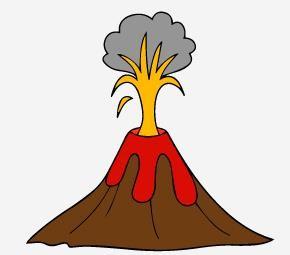
Transcript Hello, friends! Are you wondering what this is? Well, it's the molten lava that comes out from a volcano. Come, let me tell you what a volcano is. I'm sure you've seen mountains that open up and blurt out thick molten semi-solid like substance? Well, that's called a volcano. Let's learn more about it. A volcano is a vent or chimney that connects magma from within the Earth's crust to the Earth's surface. The liquid rock is called magma when it is under the Earth's surface and lava after it comes out. So how does a volcano erupt? The molten rock stored in the magma chamber rises through the crater pipe pockets. As it travels up the main vent, gasses expand and water becomes steam, creating pressure. When the pressure can no longer be contained the volcano erupts through the crater and secondary side vents. Common volcanic gases include water vapor, carbon dioxide, sulfur dioxide, hydrogen chloride hydrogen, fluoride and hydrogen sulfide. Popular belief is that volcanoes are large cone-shaped mountains but that's not true. There are many more types of volcanoes such as wide plateaus, fissure vents and bulging dome shapes. There are also volcanoes found on the ocean floor and even under ice caps such as those found in Iceland. The word volcano originally comes from the name of the Roman god of fire Vulcan. The tallest volcano in the solar system isn't on Earth at all but on Mars. |
|
|
Descriptor: Task 1 Task 2 |
A learner
|
|
Topic |
Volcanoes |
|
Learning objectives |
4.3.5.1 Understand the main points of short simple texts on a growing range general and some curricular topics by using contextual clues 4.4.2.1 Begin to use joined-up handwriting in a limited range of written work |
|
Assessment criteria |
|
|
Level of thinking skills |
Knowledge and comprehension Application |
|
Task. Read the text about volcanoes. Answer the questions.
A volcano is a mountain where molten rock erupts through the surface. The name "volcano" has its origin from the name of Vulcan, a god of fire in Roman mythology. Magma is a liquid rock inside a volcano. Lava is liquid rock (magma) that flows out of a volcano. There are around 1,510 active volcanoes in the world. We currently know of 80 or more, which are under the oceans. When magma erupts through the earth’s surface it is called “lava”. Over half of the world’s volcanoes arise in a belt around the Pacific Ocean called the “Ring of Fire”.
Use joined-up handwriting to write answers.
|
|
|
Descriptor: |
A learner
|

|
Topic |
Volcanoes |
|
Learning objective |
4.2.6.1 Take turns when speaking with others in a growing range of short, basic exchanges |
|
Assessment criteria |
|
|
Level of thinking skills |
Application |
|
Task. Look at the pictures. Ask and answer questions, share ideas with a partner.
Example: What do you know about volcanoes? Why are they called volcanoes? What shapes can they have? |
|
|
Descriptor: |
A learner
|

-
Topic
Snow and ice
Learning objectives
4.5.13.1 Use can to make requests and ask permission, use must
/ mustn’t / have to to talk about obligation; use have + object + infinitive to talk about obligations
4.5.16.1 Use conjunctions and, or, but, because to link words and phrases
Assessment criteria
-
Use can to make requests and ask permission
-
Use must / mustn’t / have to to talk about obligation
-
Use have + object + infinitive to talk about obligations
-
Use and, or, but, because to join words and phrases in the sentences
Level of thinking skills
Application
Task 1. Talk to the partner. Ask 2 questions and answer 2 questions each. Use modal verbs can, must, mustn’t, have to.
Example:
- What do you have to wear in winter?
-
We have to put on mittens in winter.
-
Can you eat ice or snow?
-
No, we mustn’t. We can get ill.
have to must can mustn’t
Task 2. Read the sentences. Fill in the gaps with the words from the table. Use each word once.
Example: We wear warm clothes and boots in winter.
We play snowballs or make a snowman in the yard.
and or but because
-
We enjoy skiing sledging in the park.
-
We like winter it is fun.
-
The friends are happy after skiing, they are a little tired.
-
When we go down the hill we can use skis a snowboard.
Descriptor:
A learner
-
asks questions for requests and permission;
-
talks about obligations;
-
uses can, must, mustn’t, have to in conversation;
-
fills in the gaps with conjunctions and, or, but, because.
-
![]()

|
Topic |
Snow and ice |
|
Learning objective |
4.5.14.1 Use prepositions of location, position and direction: at, in, on, behind, between, in front of, near, next to, opposite, above, up, down, on the right, on the left; use prepositions of time: in, on, at, before, after; use with / without to indicate; accompaniment with for instrument and for to indicate recipient |
|
Assessment criteria |
|
|
Level of thinking skills |
Application |
|
Task. Look at the picture and say where the objects are. Make up sentences. Use at, in, on, behind, between, in front of, near, next to, opposite, above, up, down, on the right, on the left.
The teacher can ask questions him/herself or can organize pair work. The learners can ask each other questions and answer them. Before the task they can revise Prepositions.
Example:
|
|
|
Descriptor: |
A learner
|
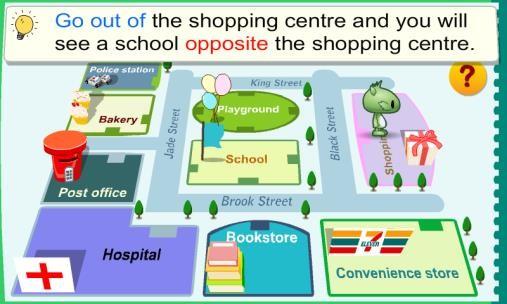
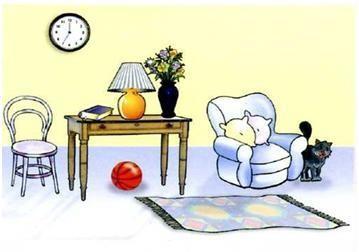
Cross curricular unit: Healthy World
Topic Healthy bodies
Learning objectives 4.2.5.1 Pronounce an increasing range of words, short
phrases and simple sentences intelligibly
-
Spell most familiar high-frequency words accurately when writing independently
Assessment criteria ∙ Utter words, short phrases and simple sentences intelligibly
-
Spell familiar often used words accurately
Level of thinking skills Knowledge and comprehension
Application
Task 1. Look at the pictures. Repeat the words and phrases after the teacher.
The
teacher uses the picture and reads the words and phrases for
learners to repeat.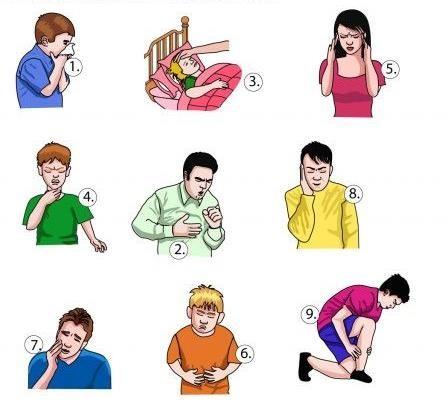
-
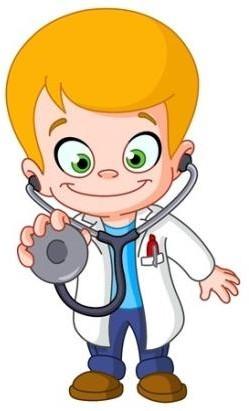
Doctor!
I need your help!
1.I’ve got a running nose. 2.I’ve got a cough.
3.I’ve got a fever. 4.I’ve got a sore throat. 5.I’ve got a headache.
6.I’ve got a stomachache. 7.I’ve got a toothache.
-
I’ve got an earache.
-
I’ve got cramp.
-
Task 2. Listen to the teacher and write words accurately.
Teacher reads the words and learners write them.
-

cold
stomach-ache
head
cough
backache
bread
earache
toothache
treasure
headache
healthy
weather
Teacher can use self or pair assessment to check the task.
Descriptor:
Task 1
Task 2
A learner
-
pronounces the words and phrases distinctly;
-
spells words correctly.
-
Topic
Healthy bodies
Learning objectives
4.5.9.1 Use common simple present forms, including short answer forms and contractions, to give personal information and talk about habitual actions, facts and future timetabled events; continue to use common past simple forms [regular and irregular] to describe actions and feelings and narrate simple events including short answer forms and contractions
4.5.12.1 Use adverbs of time and frequency: sometimes, often, always, never to indicate when and how often; begin to use simple adverbs of manner e.g. well, badly; use common –ly manner adverbs to describe actions e.g. slowly, quickly
Assessment criteria
-
Give personal information using simple present forms
-
Talk about habitual actions, facts and future timetabled events using simple present forms
-
Describe actions and feelings using simple past form
-
Tell about simple events using simple past forms
-
Use short answers and contractions in simple present and past tense
-
Use adverbs of time and frequency sometimes, often, always, never and adverbs of manner e.g. well, badly
-
Use common –ly manner adverbs to describe actions e.g.
slowly, quickly
Level of thinking skills
Knowledge and comprehension Application
Task. Talk to a partner about habitual actions, facts. Tell about actions and feelings from your experience. Use the words and ideas from the table.
Example: Usually I get up at 7 o’clock, but when I was younger, I got up at 8 o’clock.
I didn’t run quickly last year. Now I can run fast.
Present Simple Past Simple
Usually, every day, every Sunday Last year/week, yesterday sometimes, often, always, never, well, badly, slowly, quickly
-
![]()
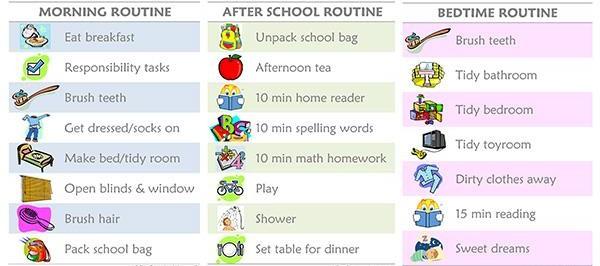
|
Descriptor: |
A learner
|
Topic Healthy bodies
Learning objectives 4.4.2.1 Begin to use joined-up handwriting in a limited range of
written work
4.4.7.1 Spell most familiar high-frequency words accurately when writing independently
-
Use adjectives, including possessive adjectives, on a growing range of general and some curricular topics to describe things; use simple one-syllable and some two- syllable adjectives [comparative and superlative] to make comparisons
Assessment criteria ∙ Use joined-up handwriting
-
Spell most familiar high-frequency words accurately
-
Use adjectives, including possessive adjectives to describe things; one-syllable and some two-syllable adjectives to make comparisons
Level of thinking skills Knowledge and comprehension
Application
Task 1. Spell the words. Write the degrees of comparison of the adjectives in the table.
Example: warm - warmer - the warmest
-
hot
sweet
dry
salty
tasty
cold
big
fat
Task 2. Make up sentences with possessive adjectives. Use joined-up handwriting.
Example:
Kate has got a friend. This is Kate’s friend.
Nick has got a puppy. This is Nick’s puppy.
-
1.
John is riding his bike.

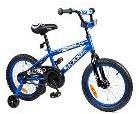
2.
Paul is flying his kite.

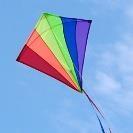
3.
Mother is wearing her hat.


4.
Mary wears a new dress.

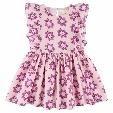
Descriptor:
Task 1
Task 2
A learner
-
spells the words correctly;
-
writes the degrees of comparison of adjectives correctly;
-
uses possessive adjectives correctly;
-
uses joined-up handwriting.
|
Topic |
Healthy bodies |
|
Learning objectives |
4.2.6.1 Take turns when speaking with others in a growing range of short, basic exchanges 4.5.10.1 Use common present continuous forms, including short answers and contractions, to talk about what is happening now and future arrangements on a limited range of personal and familiar topics; use –ing forms swimming, spelling as nouns to describe familiar and classroom activities |
|
Assessment criteria |
|
|
Level of thinking skills |
Knowledge and comprehension Application |
|
Task. Look at the picture. Discuss the topic with a partner.
Example: The children are having lunch. The girl is eating an apple. Apple is a healthy food. Eating healthy food is important. |
|
|
Descriptor: |
A learner
|


|
Topic |
Save our animals |
|
Learning objectives |
4.2.7.1 Contribute a growing range of suitable words, phrases, and sentences during short pair, group and whole class exchanges 4.5.5.1 Use interrogative pronouns who, what and where, how many, how much, how often, how big, what kind of to ask questions on growing range of familiar topics |
|
Assessment criteria |
kind of |
|
Level of thinking skills |
Knowledge and comprehension Application |
|
Task. Talk to a partner about animals. Take turns to ask and answer questions to get information.
|
|
|
Descriptor: |
A learner
|
|
Topic |
Save our animals |
|
Learning objectives |
4.4.1.1 Plan, write and check sentences with support on a range of basic personal, general and some curricular topics 4.4.2.1 Begin to use joined-up handwriting in a limited range of written work 4.4.5.1 Link with some support sentences using basic coordinating connectors |
|
Assessment criteria |
|
|
Level of thinking skills |
Knowledge and comprehension Application |
|
Task 1. Think about one animal and give short answers to the questions about it.
Task 2. Use your answers as a plan and write about the animal. Use and, or, but to link sentences.
Example: This is a fox. It lives in the forest or in the field. It eats small animals. The fox can run fast but it can’t fly. It is a wild animal. |
|
|
Descriptor: Task 1 Task 2 |
A learner
|
Topic Save our animals
Learning objective 4.5.1.1 Use singular nouns, plural nouns – including some
common irregular plural – and uncountable nouns, possessive ‘s/s’ to name, describe and label things
Assessment criteria ∙ Use the correct singular and plural form of the word
-
Use irregular plural and uncountable nouns
-
Use possessive ‘s/s’ to name, describe and label things
Level of thinking skills Application
Task. Write singular and plural of the words.
-
singular
plural
singular
plural
Mouse
Fish
Geese
Foot
Bear
Teeth
Tigers
animal
Answer keys:
-
singular
plural
singular
plural
Mouse
mice
fish
Fish
goose
Geese
Foot
feet
Bear
bears
tooth
Teeth
tiger
Tigers
animal
animals
The teacher can give answer keys to learners for self -assessment.
Descriptor: A learner
-
writes the correct form of the word;
-
uses singular and plural form of nouns;
-
uses irregular plural nouns.
Topic Save our animals
Learning objective 4.1.3.1 Understand the main points of short supported talk on an
increasing range of general and some curricular topics
Assessment criteria ∙ Identify the main points of short supported talk
Level of thinking skills Knowledge and comprehension
Task. Listen or watch the story and put the sentences in order. The 1st sentence is done for you as an example.
Teacher uses the link https://learnenglishkids.britishcouncil.org/en/short-stories/angel-look-out
-
Angel wants to play with Turtle.
They see a dangerous cone shell.
1
Grandpa is tired.
Doug takes them home.
They see a dangerous octopus.
They see a dangerous sea snake.
They see a dangerous fish.
They see a box jellyfish.
Transcript:
Angel and his grandpa live on the Great Barrier Reef in Australia. Grandpa is tired.
‘I’m going to sleep now, Angel. Be good, and don’t go past the coral! There are lots of dangerous animals out there.’
‘Hi, Angel. What are you doing?’ ‘I’m bored. Grandpa is asleep.’
‘Do you want to come and play?’ ‘Yes, let’s go!’ ‘Look, Turtle! A ball!’
‘Look out! That isn’t a ball! It’s a dangerous octopus! Swim!’
‘Angel! Look out! There’s a dangerous fish behind you! Angel, you must be careful here. You’ve got to stay with me!’
‘I’m sorry, Turtle. Look! I’ve got a present for you.’
‘Aargh! This is a dangerous cone shell! Drop it quickly, Angel!’ ‘I’m tired, Turtle. Can we rest here?’
‘Don’t sit here, Angel! There’s a dangerous sea snake! Quick! Swim!’ ‘Where are we?’
‘I don’t know. I think we’re lost. Look out, Angel! That’s a box jellyfish! Swim!’ ‘Look out, Turtle! A dangerous animal is behind you!’
‘That’s not a dangerous animal. It’s Doug. He’s my friend.’ ‘Hello, Doug. We’re lost. Can you help us?’
‘Yes, I can help you. I’ll take you home.’ ‘Hello, Angel.’
‘Hello, Grandpa.’
‘Oh, you’ve been a very good fish, Angel. Here’s a present for you.’ ‘Thanks, Grandpa!’
Descriptor: A learner
-
puts the sentences in a correct order;
-
writes numbers before the sentences..
|
Topic |
Save our animals |
|
Learning objectives |
4.3.2.1 Read and understand with some support short simple fiction and non-fiction texts 4.2.3.1 Give short, basic description of people and objects; begin to describe past experiences on an increasing range of general and some curricular topics |
|
Assessment criteria |
|
|
Level of thinking skills |
Knowledge and comprehension Application |
|
Task 1. Read the text. Answer the questions. Saiga antelope Saigas are antelopes that lived in the Western Europe, Eurasian continent, Alaska. Today there are less than 50 000 animal remain. They live on the territory of Kazakhstan, too. This animal is unusual in appearance. It has a huge, humped nose, a round body, thin legs and a short tail. They are very good runners. They can swim across rivers. Their coats protect them from the cold. Saigas live in steppes and grasslands. They can be very aggressive. Saigas are migrating in summer and winter. They eat grass and their big noses help them to filter out dust and cold air. They can have one or two babies.
Task 2. Look at the picture and describe the animal. Answer the questions.
|
|
|
Descriptor: Task 1
Task 2 |
A learner
|
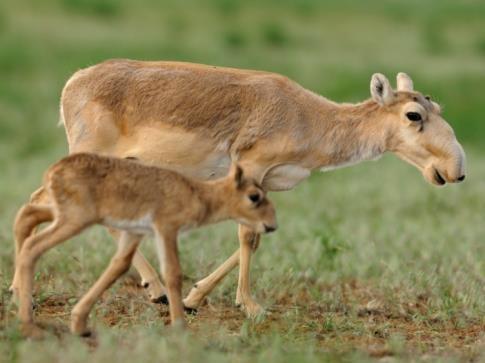

|
Topic |
Help the planet |
|
Learning objectives |
4.1.4.1 Understand an increasing range of short supported questions on general and some curricular topics 4.2.6.1 Take turns when speaking with others in a growing range of short, basic exchanges 4.5.12.1 Use adverbs of time and frequency: sometimes, often, always, never to indicate when and how often; begin to use simple adverbs of manner e.g. well, badly; use common –ly manner adverbs to describe actions e.g. slowly, quickly |
|
Assessment criteria |
|
|
Level of thinking skills |
Knowledge and comprehension Application |
|
Task. Talk to your partner. Ask and answer questions. Use words sometimes, often, always, never, well, badly, slowly, quickly.
Example:
|
|
|
Descriptor: |
A learner
|
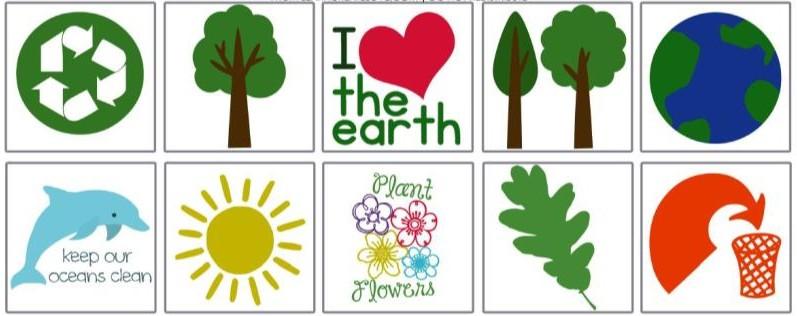
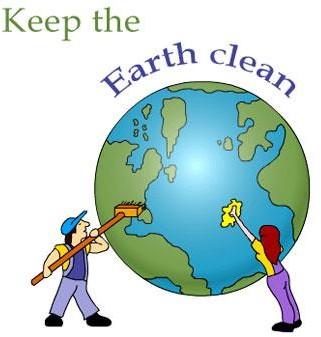
|
Topic |
Help the planet |
|
Learning objective |
4.5.8.1 Use imperative forms [positive and negative] to give short instructions on a growing range of familiar topics |
|
Assessment criteria |
|
|
Level of thinking skills |
Application |
|
Task. Look at the picture. Write imperative sentences 3 positive and 3 negative to give instructions.
Example:
|
|
|
|
|
|
|
|
|
|
|
|
|
|
|
|
|
|
Descriptor: |
A learner
|
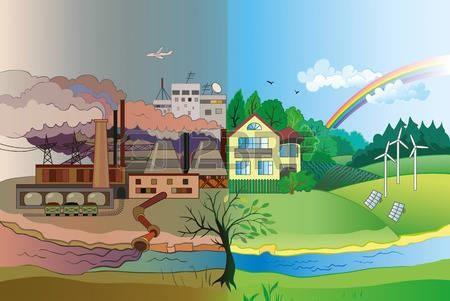
|
Topic |
Help the planet |
|
Learning objective |
4.2.4.1 Respond to questions on an increasing range of general and some curricular topics |
|
Assessment criteria |
|
|
Level of thinking skills |
Knowledge and comprehension |
|
Task. Answer the questions. Use the ideas. The teacher can ask questions or organise pair work.
|
|
|
Descriptor: |
A learner
|
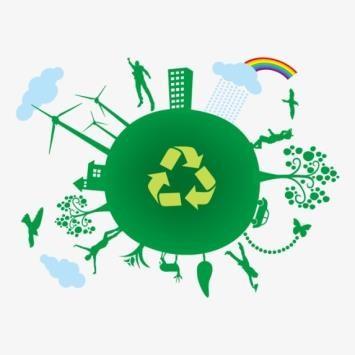
|
Topic |
Help the planet |
|
Learning objective |
4.3.5.1 Understand the main points of short simple texts on a growing range general and some curricular topics by using contextual clues |
|
Assessment criteria |
|
|
Level of thinking skills |
Knowledge and comprehension |
|
Task. Read the text. Planet Earth Forests are home to over half of the world’s animals and plants. Trees clean the air and produce oxygen. We destroy forests every minute. We throw away thousands of trees in paper every day. The oceans are home to millions of marine animals. We pollute the oceans with rubbish. Turtles mistake plastic bags for jellyfish and die when they eat them. The climate gets warmer, the ice melts and the sea rises. Rivers collect rain water. Plants clean the water. Farms and factories pollute the rivers. Every day we each flush about 50 litres of water down the toilet. People should respect nature and live a long and healthy life!
Write the missing words in the sentences.
Mark T for True or F for False sentence.
|
|
|
Descriptor: |
A learner
|
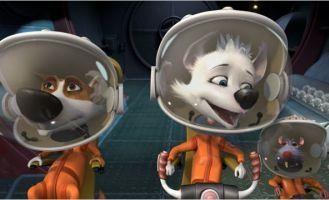 TERM
4
TERM
4
|
Cross curricular unit: Journey into space |
|
|
Topic |
Into Space |
|
Learning objective |
4.3.3.1 Recognise basic opinions in short, simple texts on an increasing range of general range of general and some curricular topics 4.5.5.1 Use interrogative pronouns who, what and where, how many, how much, how often, how big, what kind of to ask questions on growing range of familiar topics |
|
Assessment criteria |
and where, how many, what kind of |
|
Level of thinking skills |
Knowledge and comprehension Application |
|
Task 1. Read the text. Underline Billy’s opinion in red and Splodge’s opinion in blue.
Billy and Splodge are in a spaceship. They are looking for animals in space. Splodge sees a planet. ‘Everything on this planet is red. Look! The trees and leaves are red. I think animals can’t live here.’ Billy sees another planet. ‘Everything is yellow here. The sky and clouds are yellow. There is a yellow volcano. I think there aren’t any animals here too.’ Billy is in the spaceship. ‘Splodge, there are no animals in space. Let’s go home!’ Splodge sees another planet. It’s planet Earth. The sky is blue and the sun is yellow. The grass is green, the flowers are red. ‘We see animals here!’
Task 2. Ask questions on the text. Use Who, What, Where, How many, What kind of?
Example:
5.What kind of planets do they see? |
|
|
Descriptor: Task 1 Task 2 |
A learner
|
|
Topic |
Into Space |
|
Learning objective |
4.4.7.1 Spell most familiar high-frequency words accurately when writing independently |
|
Assessment criteria |
|
|
Level of thinking skills |
Application |
|
Task. Word search. Find the words and cross them. Write the words correctly.
Task 2. Make up 4 sentences using the words and write them correctly.
Example: Astronauts use oxygen to breathe in space.
1. 2. 3. 4. |
|
|
Descriptor: Task 1 Task 2 |
A learner
|
|
Topic |
Planets |
|
Learning objective |
4.3.1.1 Recognise, identify and sound with support a growing range of language at text level 4.3.4.1 Find with support books, worksheets and other print materials in a class or school library according to classification |
|
Assessment criteria |
|
|
Level of thinking skills |
Knowledge and comprehension Application |
|
Task 1. Go to the school library or look through a number of books in the classroom to find a text on the topic “Space”. Discuss with the learners the way they identified the necessary text or book.
Example:
Or alternatively teacher can prepare set of cards with words, phrases, sentences on different topics, such as space, healthy world, treasure, sport etc. And learners should classify them according to the topics.
Task 2. Read the fact file aloud. Pronounce the words and sentences correctly. Teacher monitors reading, makes notes to give feedback to the learners.
There are eight Planets in the Solar System. In increasing distance from the Sun, the planets are: Mercury, Venus, Earth, Mars, Jupiter, Saturn, Uranus, Neptune, Pluto Jupiter is the largest planet, while Mercury is the smallest. Earth is the third planet from the Sun and the fifth largest of the eight planets in the Solar System. People name it - a Blue Planet. The most beautiful planet in our Solar System is Saturn. It is a gas giant. Saturn is the second largest planet in our Solar System. It has rings; they are made of millions of ice crystals. |
|
|
Descriptor: Task 1
Task 2 |
A learner
|
Topic Planets
Learning objectives 4.3.5.1 Understand the main points of short simple texts on a
growing range general and some curricular topics by using contextual clues
-
Begin to use joined-up handwriting in a limited range of written work
Assessment criteria ∙ Identify general information in short simple texts with
support
-
Use joined-up handwriting to write words
Level of thinking skills Knowledge and comprehension
Application
Task. Read the information in the table. Fill in the gaps with the words from the box.
-
gravity
experiments
space station
oxygen
vitamins
spacecraft
spacesuit
astronaut
to float
spacewalk
Example: Astronauts like to float in space because there is no
gravity!
-
A person who can travel or live in space.
-
Big objects (like planets) pull smaller things to them. It keeps you on the ground and makes things fall down.
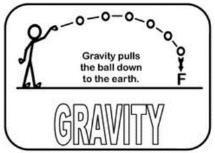
-
Tests to check ideas or make new discoveries in science!
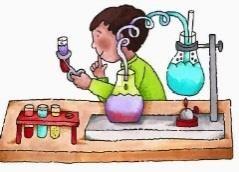
-
Very little things inside the food we eat or tablets to keep us healthy.
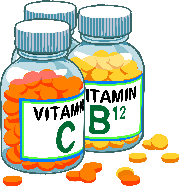
-
A gas that humans and animals breathe.
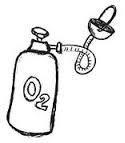
-
A place where people can live in space for a long time.
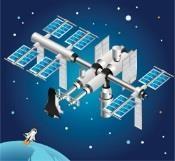
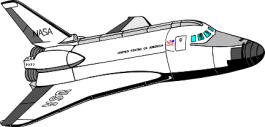

|
|
|
Descriptor: |
A learner
|
|
Topic |
Planets |
|
Learning objectives |
4.3.5.1 Understand the main points of short simple texts on a growing range general and some curricular topics by using contextual clues 4.2.4.1 Respond to questions on an increasing range of general and some curricular topics |
|
Assessment criteria |
|
|
Level of thinking skills |
Knowledge and comprehension Application |
|
Task 1. Read the facts about the planets and place the correct number in the box.
Task 2. Answer the questions. Teacher asks questions. The learners answer them.
|
|
|
Descriptor: Task 1
Task 2 |
A learner
|
|
Topic |
Aliens |
|
Learning objectives |
4.1.5.1 Identify initial, middle and final phonemes and blends 4.1.8.1 Understand short, supported narratives on an increasing range of general and some curricular topics |
|
Assessment criteria |
|
|
Level of thinking skills |
Knowledge and comprehension |
|
Task 1. Listen and write the missing letters.
Teacher reads:
Task 2. Listen to the story. Write True or False next to the sentence. Go to this link https://listenaminute.com/a/aliens.html
Example: There are aliens out there, somewhere. True
Teacher can read the transcript: There are aliens out there, somewhere. I strongly believe this. Not sure what they look like, though. I really doubt they are green, like they are in science fiction movies. I also don’t think they look like us. But I’m sure they exist. I just don’t think we’ll ever see any or find any. They live too far away. If you think about it logically, there has to be aliens out there. All a planet needs is to be warm and have water and life will exist. There are billions and billions of planets in the universe, so there are probably millions and millions that have life. Alien life. It’s also likely that some of the aliens are much more intelligent than we are. I wonder what we’d do if really intelligent aliens visited the Earth. What would we ask them? |
|
|
Descriptor: Task 1
Task 2 |
A learner
|
-
Topic
Aliens
Learning objectives
4.4.1.1 Plan, write and check sentences with support on a range of basic personal, general and some curricular topics
4.4.5.1 Link with some support sentences using basic coordinating connectors
4.5.16.1 Use conjunctions and, or, but, because to link words and phrases
Assessment criteria
-
Make a plan
-
Write sentences with support on basic personal, general and some curricular topics
-
Use and, or, but, because, so to connect words, phrases and sentences
Level of thinking skills
Application
Task 1.Give short answers to the questions.
-
What is this?
-
Where is it from?
-
What colour and size is it?
-
Is it angry or friendly?
-
What can you do together?
Task 2. Use your short answers from Task 1 as a plan to write sentences. Use connectors and, or, but, because to link words and phrases.
Example:
-
This is my new friend alien.
-
He lives in a faraway Galaxy.
-
He can be green, yellow or purple.
-
My friend is funny and friendly, but he can be angry because he is hungry.
-
We can do many things on the Earth and we can fly to his home.
Descriptor:
Task 1
Task 2
A learner
-
answers the questions in short and writes them;
-
uses the answers as a plan;
-
makes up sentences;
-
uses and, or, but, because to connect words and phrases appropriately;
-
uses and, or, but, so to connect sentences.
-

|
|
Cross curricular unit: Machines |
|
Topic |
Slow machines |
|
Learning objectives |
4.4.7.1 Spell most familiar high-frequency words accurately when writing independently 4.5.12.1 Use adverbs of time and frequency: sometimes, often, always, never to indicate when and how often; begin to use simple adverbs of manner e.g. well, badly; use common – ly manner adverbs to describe actions e.g. slowly, quickly |
|
Assessment criteria |
|
|
Level of thinking skills |
Application |
|
Task 1. Identify the words. Write them correctly. Use slowly, quickly, well, badly.
Lift Float Move Cut
Lift Float Move Cut
Task 2. Write sentences. Use the words sometimes, often, always, never. Example: The crane always lifts things quickly.
|
|
|
Descriptor: Task 1
Task 2 |
A learner
|
|
Topic |
Slow machines |
|
Learning objective |
4.3.3.1 Recognise basic opinions in short, simple texts on an increasing range of general range of general and some curricular topics |
|
Assessment criteria |
|
|
Level of thinking skills |
Knowledge and comprehension |
|
Task 1. Read the text.
Hello! I am Mike. I like sports cars. They are interesting. My brother Tom is car crazy. He buys car magazines, watches car programmes on TV and looks at car websites. He knows the name, maker, engine size and top speed of every car. He talks non-stop about the cars. I’d like to buy a sports car or a hybrid car. My brother thinks these are boring. He says a car should be powerful and fast. I don’t agree. I think cars should get you from A to B and be big enough for me and my friends. I prefer smaller cars because they are easier to park.
Decide whose opinion is it. Write Tom’s (T) or Mike’s (M) near the sentence.
|
|
|
Descriptor: |
A learner
|
![]()
![]()
![]()
![]()
|
Topic |
Fast machines |
|
Learning objectives |
4.2.4.1 Respond to questions on an increasing range of general and some curricular topics 4.2.6.1 Take turns when speaking with others in a growing range of short, basic exchanges 4.2.7.1 Contribute a growing range of suitable words, phrases, and sentences during short pair, group and whole class exchanges |
|
Assessment criteria |
|
|
Level of thinking skills |
Application Higher order thinking skills |
|
Task. Look at the pictures and talk to your classmates about machines. The learners can work in pairs or in small groups of 3-4 pupils. They can choose one picture to describe and tell about. The other learners in the group can ask questions to develop conversation.
Example:
|
|
|
Descriptor: |
A learner
|
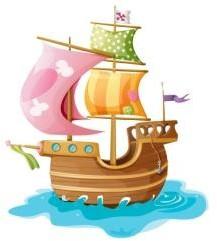
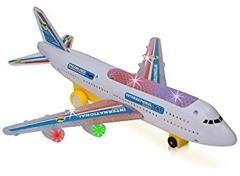
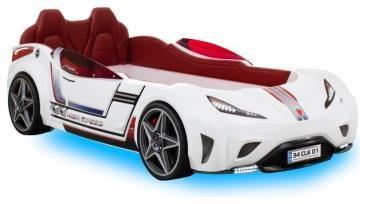
-
Topic
Robots
Learning objective
4.5.4.1 Use determiners a, an, the, zero article, some, any, this, these, that, those to refer to things on a growing range of general and some curricular topics
Assessment criteria
-
Use determiners a, an, the, zero article, some, any, this, these, that, those appropriately
Level of thinking skills
Application
Task. Fill in the gaps with the words in the boxes. Use each word only once.
a an the some any this these that those –
-
This is robot.
-
robot is fast, but robot is slow.
-
Look at robots over there! They are so smart!
-
robots are better! They help people.
-
robots can clean the house.
-
People use robots to move heavy things.
-
Are there robots on the space station?
-
Scientists use robots to make experiments.
-
Japanese engineers made amazing robot helping old people.
Descriptor:
A learner
-
uses determiners;
-
completes sentences correctly.
-
![]()
жүктеу мүмкіндігіне ие боласыз
Бұл материал сайт қолданушысы жариялаған. Материалдың ішінде жазылған барлық ақпаратқа жауапкершілікті жариялаған қолданушы жауап береді. Ұстаз тілегі тек ақпаратты таратуға қолдау көрсетеді. Егер материал сіздің авторлық құқығыңызды бұзған болса немесе басқа да себептермен сайттан өшіру керек деп ойласаңыз осында жазыңыз
Formative Assessment on the subject «The English language» Grade 4
Formative Assessment on the subject «The English language» Grade 4
A collection of tasks for Formative Assessment on the subject «The English language»
Grade 4
CONTENTS
Cross curricular unit 1. Kazakhstan in the World of Sport 4
Cross curricular unit 2. Values in Myths and Legends 13
Cross curricular unit 3. Treasure and Heritage 25
Cross curricular unit 4. Professions and Ways of Communication 33
Cross curricular unit: Hot and Cold 41
Cross curricular unit: Healthy World 54
Cross curricular unit: Journey into space 68
Cross curricular unit: Machines 76
TERM 1
Cross curricular unit 1. Kazakhstan in the World of Sport
|
Topic |
Children’s games |
|
Learning objectives |
4.1.2.1 Understand an increasing range of supported questions which ask for personal information 4.2.4.1 Respond to questions on an increasing range of general and some curricular topics 4.5.17.1 Use me, too and I don’t to give short answers; use when clauses to describe simple present and past actions on personal and familiar topics |
|
Assessment criteria |
|
|
Level of thinking skills |
Knowledge and comprehension Application |
|
Task. Ask and answer questions about children’s games in different countries. Use pictures to make up questions.
Example: T - Teacher S - Student T: Do you know where ‘limbo’ game is from? S: Yes, I do. It is from Trinidad and Tobago. T: Do you know where Trinidad and Tobago is? S: Yes, I know. It is in South America. T: Do you like to play ‘limbo’? S: Yes, I do. / No, I don’t. T: Me, too/ I don’t. |
|
|
Descriptor: |
A learner
|
|
Topic |
Children’s games |
|
Learning objective |
4.4.4.1 Write with support a sequence of short sentences in a paragraph to give basic personal information |
|
Assessment criteria |
|
|
Level of thinking skills |
Application |
|
Task. Write a paragraph in 3-5 sentences to describe one of the pictures. Give some basic personal information.
Example: There are many board games. I know Scrabble, chess and Snakes and ladders. My family is playing a board game. We like to play chess with my father. It is my favourite game.
|
|
|
Descriptor: |
A learner
|
|
Topic |
Children’s games |
|
Learning objective |
4.2.4.1 Respond to questions on an increasing range of general and some curricular topics |
|
Assessment criteria |
|
|
Level of thinking skills |
Application |
|
Task. Look at the pictures and make up questions about them. Ask and answer your partner’s questions.
Example: S 1 - Student 1 S 2 – Student 2
S 1: What do you need to play chess? S 2: I need chess pieces. S 1: Do you like to play chess? S 2: Yes, I do./ No, I don’t.
|
|
|
Descriptor: |
A learner
|



|
Topic |
Olympic games |
|
Learning objective |
4.1.4.1 Understand an increasing range of short supported questions on general and some curricular topics |
|
Assessment criteria |
|
|
Level of thinking skills |
Knowledge and comprehension |
|
Task.You will listen to a man speaking about sports. Underline the correct answer.
Go to the link: https://listenaminute.com/s/sport.html Teacher can read the transcript below.
Example: Is the man very good at sport? – Yes, he is./ No, he is not.
Transcript Are you good at sport? I’m not, but I love watching and playing all kinds of sport. My favourite sport is football – the kind with the round ball, not American football. I wasn’t very good at football when I was a kid. This did not stop me playing. I played in the park with my friends for hours every day. What is your national sport? Do you like it? I love Japan’s national sport sumo. It is one of the most exciting sports in the world. You have to spend a little time getting to know the rules and the fighters. The greatest thing about sport is that it brings people together from all over the world. Another good thing is that it keeps us healthy. Sports stars are very lucky. They love their job and stay fit by doing it every day. What are you going to play next? |
|
|
Descriptor: |
A learner
|
|
Topic |
Olympic games |
|
Learning objective |
4.2.4.1 Respond to questions on an increasing range of general and some curricular topics |
|
Assessment criteria |
|
|
Level of thinking skills |
Knowledge and comprehension Application |
|
Task. Read the text.
Tonight is the big hockey game. Bill has a blue helmet and blue skates. The hockey puck drops. The game begins. Bill skates very fast and gets the puck with his stick. He skates up the ice and shoots it towards the net. The puck goes inside the net. GOAL! Bill’s team wins the game!
Answer the questions.
|
|
|
Descriptor: |
A learner
|

|
Topic |
Olympic games |
|
Learning objective |
4.4.1.1 Plan, write and check sentences with support on a range of basic personal, general and some curricular topics |
|
Assessment criteria |
|
|
Level of thinking skills |
Application |
|
Task. Look at the pictures and choose ONE. Plan and write a paragraph describing the picture.
Use words: Olympic torch, Olympic rings, medals, champion, winner, first place, the Cup. |
|
|
Example: Picture 1.
Plan:
Writing These are Olympic medals. There are three Olympic medals. They are gold, silver and bronze. Olympic champions have only gold medals and sometimes silver medals.
1. 2. 3.
4. 5. 6. |
|
|
Descriptor: |
A learner
|



|
Topic |
Aesop’s Fables |
|
Learning objective |
4.1.8.1 Understand short, supported narratives on an increasing range of general and some curricular topics |
|
Assessment criteria |
|
|
Level of thinking skills |
Knowledge and comprehension |
|
Task. Listen to the story about the Sun and the Wind. Mark the sentences True and False. Follow the link https://www.youtube.com/watch?v=0GGvRtuxglM
Transcript The Sun and the Wind One day the Wind approached the Sun and asked: “Hey, Sun, who do you think is the strongest in the world? It's me, the Wind. Ha – ha – ha!” “Ha – ha - ha, oh, really?!” - The Sun chuckled. “If you don't believe me, let's bet on it. Ha – ha – ha, “ Just then they saw a man walking through the field. “See that man. Whoever can make him take off his jacket wins!” As soon as the Wind said that he started to blow as hard as he could. "That's strange! Why is the wind so strong today!", the man held on to his jacket tightly.The Wind blew harder and harder, but the stronger the Wind blew the tighter the man held on to his jacket. "Oh, oh! I'm too tired! Ha- ha- ha! I can't blow anymore! Oh- oh!" As soon as the Wind stopped the Sun came out. "Ok, then it's my turn now! Watch this!" The Sun laughed and started to shine as bright as she could. "Huh, why is it suddenly so hot?! Oh, it's too hot! Oh, oh!", the man started to undo one button, then another and another, but it was still too hot. So he took off his jacket and threw it aside. "Oh, ah, it's too hot!" "See that, Wind, you embarrassed yourself by trying to show off!" The Wind became so embarrassed that he blew away. |
|
|
Descriptor: |
A learner
|
Topic Aesop’s Fables
Learning objective 4.2.8.1 Express basic likes and dislikes; recount short, basic
stories and events on a limited range of general and some curricular topics
Assessment criteria ∙ Talk about likes and dislikes
-
Retell short stories and events on different topics
Level of thinking skills Knowledge and comprehension
Task. Match the sentences to the pictures. Retell the fable “The Lion and the Mouse” and tell whether you like the story or not.
-
1. This soon wakened the Lion, who placed his huge paw upon him, and opened his big jaws
to swallow him.
2. Just, then the little Mouse happened to pass by, and seeing the sad situation, in which the
Lion was, went up to him and soon bit away the ropes that bound the King of the Beasts. “Was I not right?” said the little Mouse.
3. Sometime after hunters caught the Lion in a trap, and they wanted to carry him alive to the
King, tied him to a tree while they went in search of a wagon to carry him on.
4. “Pardon, O King,” cried the little Mouse: “forgive me this time, I shall never forget it: who knows but what I may be able to do you a turn some of these days?” The Lion laughed at the
idea of the Mouse being able to help him that he lifted up his paw and let him go.
5. Little friends may become great friends.
6. Once, when a Lion was asleep a little Mouse began running up and down upon him.



-
-
-
A.
C.
E.
B.
D.
F.
-
-
Descriptor: A learner


-
reads the sentences;
-
matches the sentences to the pictures correctly;
-
recounts the story in a meaningful way;
-
expresses likes or dislikes.
|
Topic |
Aesop’s Fables |
|
Learning objective |
4.3.3.1 Recognise basic opinions in short, simple texts on an increasing range of general and some curricular topics |
|
Assessment criteria |
|
|
Level of thinking skills |
Knowledge and comprehension |
|
Task. Read the fable.
The Tortoise and the Hare A speedy Hare bragged about how fast he was. Tired of him boasting, Slow and Steady, the Tortoise, challenged him to a race. All the animals in the forest gathered to watch. Hare ran down the road and then decided to rest. He looked back at the Tortoise and cried out, "How do you expect to win this race when your pace is very slow?” Hare stretched himself out alongside the road and fell asleep, thinking, "There is plenty of time to relax." The Tortoise walked and walked. He never, ever stopped and came to the finish line. The animals cheered so loudly for Tortoise, that they woke up Hare. Hare yawned, and began to run, but it was too late. Tortoise was over the line.
Answer the questions in full sentences.
|
|
|
Descriptor: |
A learner
|
Cross curricular unit 2. Values in Myths and Legends
|
Topic |
Traditional stories |
|
Learning objectives |
4.2.2.1 Ask questions to find out about present and possibly past experiences on an increasing range of general and some curricular topics 4.5.15.1 Use would you like to to invite and use appropriate responses yes please, no thanks; use let’s + verb; verbs go, enjoy, like + verb + ing; begin use infinitive of purpose to describe simple actions and verbs want, start + infinitive; use declarative what [a/an] + adjective + noun to show feelings |
|
Assessment criteria |
|
|
Level of thinking skills |
Knowledge and comprehension Application |
|
Task. Look at the pictures and answer the questions. Use “I would like to”, “go/ enjoy/ like + verb + ing”, “what [a/an] + adjective + noun”.
Example: Teacher: Do you like listening to stories? Student: Yes, I do. I like listening to stories./ No, I don’t. I like writing stories.
Task 2. Look at the pictures and make up sentences. Write them. Follow the example.
Example: Would you like to read my book? - Yes, please. / No, thanks. Do you want to fly on a magic carpet? - Yes, I do. / No, I don't. |
|
Descriptor:
Task 1
Task 2
A learner
-
expresses opinion by using “I would like to”, “go/ enjoy/ like
+ verb + ing”, “what [a/an] + adjective + noun”;
-
answers questions correctly;
-
writes sentences using would you like to to invite and writes appropriate answers yes please, no thanks;
-
starts using verbs want and start +infinitive.
|
Topic |
Traditional stories |
|
Learning objective |
4.1.4.1 Understand an increasing range of short supported questions on general and some curricular topics |
|
Assessment criteria |
|
|
Level of thinking skills |
Knowledge and comprehension |
|
Task. Listen to the story and choose the correct answer.
Follow the link: https://www.youtube.com/watch?v=waw0U9tKpW0
Transcript Once upon a time there was a Prince who wanted to marry a Princess, but she would have to be a real Princess. He traveled all over the world to find one but nowhere could he get what he wanted. There were princesses enough but it was difficult to find out whether they were real ones. There was always something about them that was not as it should be, so he came home again and was sad for he would have liked very much to have a real princess. One evening a terrible storm came on. There was thunder and lightning and the rain poured down in torrents. Suddenly a knocking was heard at the city gate and the old King went to open it. It was a princess standing out there in front of the gate but “good gracious!” what a sight the rain and the wind had made her look: the water ran down from her hair and clothes, it ran down into the toes of her shoes and out again at the heels, and yet she said that she was a real princess. “Well, |
|

|
we'll soon find that out!”, thought the old Queen but she said nothing, went into the bedroom, took all the bedding off the bedstead and laid a pea on the bottom, then she took 20 mattresses and laid them on the pea and then 20 eiderdown beds on top of the mattresses. On this the princess had to lie all night. In the morning she was asked how she had slept. “Oh, very badly said she, “I have scarcely closed my eyes, all night, heaven only knows, what was in the bed but I was lying on something hard so that I am black and blue all over my body. It's horrible!” Now they knew that she was a real princess because she had felt the pea right through the 20 mattresses and the 20 eiderdown beds. Nobody but a real princess could be as sensitive as that. So the prince took her for his wife, for now he knew that he had a real princess and the pea was put in the museum where it may still be seen if no one has stolen it there. That is a true story. |
|
|
Descriptor: |
A learner
|
|
Topic |
Traditional stories |
|
Learning objectives |
4.4.1.1 Plan, write and check sentences with support on a range of basic personal, general and some curricular topics 4.5.3.1 Use adjectives, including possessive adjectives, on a growing range of general and some curricular topics to describe things; use simple one-syllable and some two- syllable adjectives [comparative and superlative] to make comparisons |
|
Assessment criteria |
|
|
Level of thinking skills |
Application |
|
Task. Look at the pictures. Use a plan to describe the picture. Use adjectives and make comparisons.
Example: Plan:
Writing: There are children in the picture. There is a magic carpet in the picture.The children are flying. The boys are happy but the girl is scared. The magic carpet is beautiful and fast. It is the fastest carpet in the world. |
|
|
Descriptor: |
A learner
|



|
Topic |
People and places |
|
Learning objective |
4.1.8.1 Understand short, supported narratives on an increasing range of general and some curricular topics |
|
Assessment criteria |
|
|
Level of thinking skills |
Knowledge and comprehension |
|
Task. Listen to the story twice. Underline True and False for the sentences.
Follow the link: http://learnenglishkids.britishcouncil.org/en/short-stories/the-princess-and-the- dragon?destination=node%2F2042
Example: Once upon a time, a king and queen lived in a golden castle. True False
|
|
|
Descriptor: |
A learner
|
|
Topic |
People and places |
|
Learning objective |
4.3.5.1 Understand the main points of short simple texts on a growing range general and some curricular topics by using contextual clues |
|
Assessment criteria |
|
|
Level of thinking skills |
Knowledge and comprehension |
|
Task. Read 10 sentences and put them in a right order. Write the numbers next to the sentences The 1stsentence is marked for you.
Come with me, princess, don’t be scared! My pleasure, princess. We’ll save the princess. 1 Help me! Please, save our princess. Thank you for saving me. Help me! Whee! I can fly. My pleasure. Thank you for saving our princess. |
|
|
Descriptor: |
A learner
|
Topic People and places
Learning objective 4.5.3.1 Use adjectives, including possessive adjectives, on a
growing range of general and some curricular topics to describe things; use simple one-syllable and some two- syllable adjectives [comparative and superlative] to make comparisons
Assessment criteria ∙ Describe things using different adjectives and possessive
adjectives
-
Make comparison using simple one-syllable and some two- syllable adjectives [comparative and superlative]
Level of thinking skills Application
Task 1. Read the adjectives and match them to the pictures. Make up sentences.
Example:
The
King and the Queen are very
happy.

-
-
1. happy
A.
2. ugly, scary
B.
3. beautiful
C.
4. friendly, strong
D.
5. golden
E.
-
Task
2.
Look at
the pictures and the adjectives in the box. Write a sentence for
each of the pictures and make up comparatives or
superlatives.
Example: Mary is more beautiful than
Anne.

-
-
beautiful
Mary
Anne
kind
Blue Dragon
Green Dragon
long
Susan
Rose
ugly
Jack
Jim
tall
Silver Castle
Golden Castle
-





 Descriptor:
Descriptor:

Task 1
Task 2
A learner
-
matches the adjectives to the pictures correctly;
-
makes up sentences with comparatives or superlatives;
-
writes comparative and superlative sentences;
-
uses pictures and given words from the table.
|
Topic |
|
Dragons and creatures |
|
Learning objectives |
|
4.4.7.1 Spell most familiar high-frequency words accurately when writing independently 4.5.1.1 Use singular nouns, plural nouns – including some common irregular plural – and uncountable nouns, possessive ‘s/s’ to name, describe and label things |
|
Assessment criteria |
|
|
|
Level of thinking skills |
Application |
|
|
Task. Label the Red dragon. Complete the sentences about it. Pay attention to the spelling.
Example: This is the Red dragon.
3
4
5 6 |
||
|
Descriptor: |
A learner
|
|
![]()

|
Topic |
Dragons and creatures |
|
Learning objective |
4.5.16.1 Use conjunctions and, or, but, because to link words and phrases |
|
Assessment criteria |
|
|
Level of thinking skills |
Application |
|
Task Describe a dragon. Put and, and, or, but, because.
|
|
|
Descriptor: |
A learner
|

|
Topic |
Dragons and creatures |
|
Learning objectives |
4.2.4.1 Respond to questions on an increasing range of general and some curricular topics 4.2.6.1 Take turns when speaking with others in a growing range of short, basic exchanges |
|
Assessment criteria |
|
|
Level of thinking skills |
Knowledge and comprehension Application |
|
Task. Choose a partner and ask questions. In turn, respond to his/ her questions. Pictures will help you.
|
|
|
Descriptor: |
A learner
|




TERM 2
Cross curricular unit 3. Treasure and Heritage
|
Topic |
Treasure maps |
|
Learning objectives |
4.1.3.1 Understand the main points of short supported talk on an increasing range of general and some curricular topics 4.2.6.1 Take turns when speaking with others in a growing range of short, basic exchanges |
|
Assessment criteria |
|
|
Level of thinking skills |
Knowledge and comprehension Application |
|
Task 1. Listen to the story. Answer the questions. Go to this link:http://learnenglishkids.britishcouncil.org/en/short-stories/the-treasure-map Teacher can read the transcript below.
Example: Did Sanjay see a bottle in the sea? - Yes, he did.
Task 2. Choose a partner and tell your story about the treasure map. You may use pictures, words and expressions or sentences from Task 1 to support your story.
bottle, coded message, treasure map, found, it said, in the ocean, gold, jewels, silver, pirate, island. |
|




Transcript
Sanjay saw a bottle floating in the sea. There was something inside it. He took it out. ‘What is it?’ asked Sarah. ‘It’s a map! It’s a map!’ They looked round and saw a talking parrot. ‘Buried treasure! Buried treasure!’ ‘Wow! A treasure map! Let’s follow it.’ ‘Maybe it’s gold!’ ‘Or silver?’ ‘Or jewels?’ ‘OK. We are here and the treasure is here.’ ‘Let’s go! I’ll read,’ said the parrot. ‘Walk 80 meters north.’ ‘1, 2, 3 … 78, 79, 80.’ ‘Turn right at the big coconut tree and go straight on until the crocodile pond. Cross the bridge, turn to the left and keep walking. Turn right in front of the big, round rock. Walk straight ahead for 50 meters.’ ‘1, 2, 3 … 48, 49, 50.’ ‘Go through the cave. Mind the bats! Mind the bats! Walk straight on until the beach. Go along the beach for 200 meters. The treasure is behind the square rock. ‘Over there! Over there!’ Parrot shouted. ‘It’s empty!’ cried Sarah. Inside there was an old note. Dear Finder, Sorry, but I took my gold. I needed to buy a new pirate ship. Bye, Captain Redbeard. ‘Well, at least we had a nice walk,’ said Sanjay. ‘Yes, and we made a new friend!’
|
Descriptor: Task 1 Task 2 |
A learner
|
|
Topic |
Treasure maps |
|
Learning objective |
4.4.1.1Plan, write and check sentences with support on a range of basic personal, general and some curricular topics 4.5.14.1 Use prepositions of location, position and direction: at, in, on, behind, between, in front of, near, next to, opposite, above, up, down, on the right, on the left; use prepositions of time: in, on, at, before, after; use with / without to indicate; accompaniment with for instrument and for to indicate recipient |
|
Assessment criteria |
|
|
Level of thinking skills |
Application |
|
Task. Imagine you are a pirate. Look at the map. There is an ‘X’ to show where your treasure is. Write directions to find your treasure! Use prepositions at, in, on, behind, between, in front of, near, next to, opposite, above, up, down, on the right, on the left. Check your sentences.
Example: 1. Come ashore.
|
|
|
Descriptor: |
A learner
|

|
Topic |
Treasure and numbers |
|
Learning objective |
4.2.5.1 Pronounce an increasing range of words, short phrases and simple sentences intelligibly |
|
Assessment criteria |
|
|
Level of thinking skills |
Application |
|
Task. Name the objects and tell their coordinates.
Example: The octopus is 1 – 1.
|
|
|
Descriptor: |
A learner
|

|
Topic |
Treasure and numbers |
|
Learning objective |
4.2.5.1 Pronounce an increasing range of words, short phrases and simple sentences intelligibly 4.5.5.1 Use interrogative pronouns who, what and where, how many, how much, how often, how big, what kind of to ask questions on growing range of familiar topics |
|
Assessment criteria |
|
|
Level of thinking skills |
Application |
|
Task. Look at the picture and make up 7 questions. Use who, what and where, how many, how much, how often, how big, what kind of. You can use: Shark Reef, Pirate Cove, Lava Rock, Alligator alley.
Example: Where is the Shark Reef? |
|
|
Descriptor: |
A learner
|

|
Topic |
Our planet’s treasure |
|
Learning objectives |
4.2.3.1 Give short, basic description of people and objects on a limited range of general and some curricular topics; begin to describe past experiences on an increasing range of general and some curricular topics 4.4.4.1 Write with support a sequence of short sentences in a paragraph to give basic personal information |
|
Assessment criteria |
|
|
Level of thinking skills |
Application |
|
Task 1. Look at the picture and talk to your partner. Describe people and objects in it.
Example: This is a museum. You can see sceletons of dinosaurs at the museum. There are children and a teacher in the picture. There is a sceleton of T-Rex at the museum.
Task 2. Write sentences to describe the picture.
Example: It was Sunday. The children went to the museum. There was a teacher and seven pupils. The saw a sceleton of dinosaur. It is big sceleton. It has got white colour. Children like to go to the mesuem.
Descriptor: A learner Task 1 ∙ works in pairs and describes people and objects in the picture; Task 2 ∙ describes the picture in written form;
|
|
|
Topic |
Our planet’s treasure |
|
Learning objective |
4.1.8.1 Understand short, supported narratives on an increasing range of general and some curricular topics 4.2.8.1 Express basic likes and dislikes; recount short, basic stories and events on a limited range of general and some curricular topics |
|
Assessment criteria |
|
|
Level of thinking skills |
Knowledge and comprehension Application |
|
Task 1. Listen to the story and put the sentences in right order. You will listen twice. The first sentence is marked for you as an example.
Follow the link to listen to the story: https://learnenglishkids.britishcouncil.org/en/short- stories/dinosaur-dig
She picked up a golden bone that was hidden under a bush. ‘What will happen if the dinosaur catches us?’ ‘Well, the game is over!’ 1_ It was Sonia’s birthday. She had a new game. Sonia was at home, sitting at her computer. ‘Hmmm. Maybe I’ll play a different game.’ ‘You’re in Dinosaur Dig. We have to find old dinosaur bones.’ They heard a dinosaur roar. Sonia and the boy hid behind a bush. She decided to try her new game. She clicked on the icon. There was the same icon that she saw on her computer. Sonia touched the icon.
Task 2. Now retell the story. Use the above sentences.
Answer the questions:
|
|
|
Descriptor: Task 1
Task 2 |
A learner
|
|
Topic |
Our planet’s treasure |
|
Learning objectives |
4.3.5.1 Understand the main points of short simple texts on a growing range general and some curricular topics by using contextual clues 4.5.5.1 Use interrogative pronouns who, what and where, how many, how much, how often, how big, what kind of to ask questions on growing range of familiar topics |
|
Assessment criteria |
|
|
Level of thinking skills |
Knowledge and comprehension Application |
|
Task. Read the story and ask questions. Use who, what and where, how many, how much, how often, how big, what kind of.
Example: Who got a birthday gift?
It was Sonia’s birthday. She had a new game ‘Dinosaur Dig!’ This was what she wanted. She switched on the computer. A strange icon appeared. Sonia clicked on the icon. FLASH! She was in Dinosaur Dig. There was a boy. She picked up a golden bone that was hidden under a bush. ‘No!’ shouted the boy. ‘You mustn’t pick the golden ones up! Now watch out for the dinosaur!’ Suddenly they heard a noise. The ground began to shake. They heard a roar. ‘RUN!’ Sonia and the boy ran fast through the bushes. There was the same icon that she saw on her computer. Sonia touched it. FLASH! Sonia was at home. |
|
|
Descriptor: |
A learner
|


 Cross curricular unit 4. Professions and Ways of Communication
Cross curricular unit 4. Professions and Ways of Communication
|
Topic |
Body language |
|
Learning objectives |
4.1.1.1 Understand an increasing range of classroom instructions 4.2.1.1 Make basic statements which provide information on an increasing range of general and some curricular topics |
|
Assessment criteria |
|
|
Level of thinking skills |
Knowledge and comprehension Application |
|
Task 1. Listen to the teacher and react to commands using body language. Teacher reads the commands:
Task 2. Tell about parts of our body that help us to express our emotions/ feelings.
Example: You can rub your nose to show “I think”.
|
|
|
Descriptor: |
A learner
|
|
Topic |
Body language |
|
Learning objectives |
4.2.1.1 Make basic statements which provide information on an increasing range of general and some curricular topics 4.4.2.1 Begin to use joined-up handwriting in a limited range of written work |
|
Assessment criteria |
|
|
Level of thinking skills |
Knowledge and comprehension Application |
|
Task 1. Make up sentences describing pictures. What feelings do they show?
Example:The girl is surprised.
Task 2. Write sentences. Use joined-up handwriting. |
|
|
Descriptor: |
A learner
|

Topic Communicating around the world
Learning objectives 4.1.1.1 Understand an increasing range of classroom instructions
-
Understand the main points of short supported talk on an increasing range of general and some curricular topics
Assessment criteria ∙ Follow classroom instructions
-
Identify the main points of short talk with support
Level of thinking skills Knowledge and comprehension
Task. Listen to the instructions.
Teacher reads the instructions:
-
Listen to a man talking about different professions.
-
Put the number in a small box next to the picture.
-
Then write the name of the profession in a big box. Number 1 is done as an example.
Follow the link: https://www.123listening.com/freeaudio/people1-5.mp3 .
! Listen to 1.40’
-






1
doctor
Descriptor: A learner
-
follows instructions;
-
writes the numbers in the boxes under the pictures;
-
writes the names of the professions under the pictures.
Topic Communicating around the world
Learning objectives 4.4.3.1 Write with support short sentences which describe people,
places and objects
-
Use upper and lower case letters accurately when writing names, places and short sentences when writing independently
Assessment criteria ∙ Give information using basic statements
-
Use upper and lower case letters accurately to write names, places and short sentences
Level of thinking skills Knowledge and comprehension
Application
Task. Complete the table and write sentences about countries.
Example: The capital of Kazakhstan is Nur-Sultan. People speak Kazakh.
-


Kazakhstan
Kazakh
Nur-Sultan


China


English


Japan
Descriptor: A learner
-
writes the names of places and languages with the capital letter;
-
writes correct sentences.
|
Topic |
Communicating around the world |
|
Learning objective |
4.3.1.1 Recognise, identify and sound with support a growing range of language at text level |
|
Assessment criteria |
|
|
Level of thinking skills |
Knowledge and comprehension |
|
Task. Read the text. Underline the numbers and pronounce them. Answer the questions.
There are many different languages in the world. All languages have words. Chinese doesn’t have an alphabet. You write characters. Cambodian has the longest alphabet. It has 76 letters. In New Zealand, sign language is an official language. 231 languages are now completely extinct. English is an official language in more than 60 countries.
Descriptor: A learner
|
|
|
Topic |
Technology |
|
Learning objectives |
4.1.2.1 Understand an increasing range of supported questions which ask for personal information 4.4.4.1 Write with support a sequence of short sentences in a paragraph to give basic personal information |
|
Assessment criteria |
|
|
Level of thinking skills |
Knowledge and comprehension Application |
|
Task 1. Look at the pictures and answer the questions.
Task 2. Describe your favourite tech. Write what it is, why it is favourite, who gave you it, how does it help you.
Example: My favourite tech is my iPad. It is my favourite because it is a birthday gift. My Granny gave it to me. It helps me to read books, listen to the music, and find information. |
|
|
Descriptor: Task 1 Task 2 |
A learner
|





|
Topic |
Technology |
|
Learning objectives |
4.2.3.1 Give short, basic description of people and objects on a limited range of general and some curricular topics; begin to describe past experiences on an increasing range of general and some curricular topics 4.5.3.1 Use adjectives, including possessive adjectives, on a growing range of general and some curricular topics to describe things; use simple one-syllable and some two- syllable adjectives [comparative and superlative] to make comparisons |
|
Assessment criteria |
|
|
Level of thinking skills |
Knowledge and comprehension Application |
|
Task. Look at the picture and describe people and objects in it. Use his/her and comparative and superlative adjectives.
Example: This is Tom. He is a 4-th grade student. Tom has a smartphone. His smartphone is new. It is the best phone in his class. |
|

Descriptor: A learner
-
describes people and objects;
-
uses possessive adjectives;
-
uses comparative adjectives;
-
uses superlative adjectives.
|
Topic |
Technology |
|
Learning objective |
4.5.11.1 Use has got/ have got, there is/ are statement, negative, question forms including short and full answers and contractions |
|
Assessment criteria |
|
|
Level of thinking skills |
Application |
|
Task. Look at the picture and describe it. Write positive and negative sentences and questions by using have got, has got, there is, there are.
Example: There are six people in the picture. They have not got iPads. Have paul got a mobile?
Paul
Mary |
|
|
Descriptor: |
A learner
|

 TERM 3
TERM 3
-
Cross curricular unit: Hot and Cold
Topic
Weather
Learning objectives
4.1.9.1 Recognise words that are spelt out from a limited range of general and curriculum topics
4.4.7.1 Spell most familiar high-frequency words accurately when writing independently
Assessment criteria
-
Recognise spelling of words from limited range of topics
-
Write high-frequency words accurately
Level of thinking skills
Knowledge and comprehension Application
Task. Listen to the teacher spelling the word and write the word you hear under the picture.
Teacher reads:
cold hot warm cloudy foggy sunny rainy snowy windy stormy
Go to this link http://learnenglishkids.britishcouncil.org/sites/kids/files/attachment/worksheets- weather-1.pdf
1. cold 2. 3. 4. 5.
6. 7. 8. 9. 10.
Descriptor:
A learner
-
recognises the spelt words;
-
spells the words accurately.
-
|
Topic |
Weather |
|
Learning objectives |
4.3.5.1 Understand the main points of short simple texts on a growing range general and some curricular topics by using contextual clues 4.2.1.1 Make basic statements which provide information on an increasing range of general and some curricular topics |
|
Assessment criteria |
|
|
Level of thinking skills |
Knowledge and comprehension Application |
|
Task 1. Read the text. Match the suggestions to the country.
Here is the forecast for tomorrow’s weather in the UK and Ireland! In Scotland it is snowy and the weather is very cold. In the North of England it is foggy, and in the centre and east it is rainy. In the South and South East of England it is very sunny and hot. In the South West it is warm but rainy. In Wales it is cloudy but warm. In Northern Ireland it is very sunny. In Ireland it is stormy and very windy.
Task 2. Tell about the weather in:
Example: It will be very cold in Ireland. |
|
|
Descriptor: Task1 Task2 |
A learner
|

-
Topic
Weather
Learning objectives
4.4.5.1 Link with some support sentences using basic coordinating connectors
4.5.16.1 Use conjunctions and, or, but, because to link words and phrases
Assessment criteria
-
Use and, or, but, because to link words and phrases and sentences
Level of thinking skills
Application
Task. Use the words from the table to complete the sentences.
and and because or but or
-
In the South of Kazakhstan the weather is sunny_ hot in summer.
-
In the North of Kazakhstan it is cold windy in winter.
-
In Astana the weather is hot in summer it is cold in winter.
-
In the East of Kazakhstan the weather is warm hot.
-
In the West of Kazakhstan the weather is warm and rainy windy and hot in summer.
-
In Almaty the weather is warm and sunny it is in the South of Kazakhstan.
Descriptor:
A learner
-
uses conjunctions to link words and phrases;
-
uses conjunctions to connect sentences.
-
![]()
|
Topic |
Weather |
|
Learning objective |
4.2.1.1 Make basic statements which provide information on an increasing range of general and some curricular topics 4.5.10.1 Use common present continuous forms, including short answers and contractions, to talk about what is happening now and future arrangements on a limited range of personal and familiar topics; use –ing forms swimming, spelling as nouns to describe familiar and classroom activities |
|
Assessment criteria |
|
|
Level of thinking skills |
Application |
|
Task. Look at the pictures. Talk to a partner about what is happening (seasons, weather, clothes, activities). Ask and answer the questions.
|
|
|
Descriptor: |
A learner
|

Topic Weather
Learning objectives 4.3.6.1 Understand with some support some specific information
and detail in short, simple texts on a growing range of general and some curricular topics
-
Understand an increasing range of short supported questions on general and some curricular topics
Assessment criteria ∙ Identify detailed information in short text with support
-
Answer short questions with support
Level of thinking skills Knowledge and comprehension
Task. Read the texts. Listen to the teacher’s questions and answer them.
Teacher asks questions after the learners read the texts.
-
How many seasons are there in a year?
-
What are winter/spring/ summer/ autumn months?
-
What is the weather like in winter/spring/ summer/ autumn?
-
What do children like to do in winter/spring/ summer/ autumn?
-
What is the coldest/ hottest season in the year?
-

There are four seasons in a year: spring, summer, autumn and winter. December, January and February are winter months. The weather is cold. It usually snows. The days are short and the nights are long. Children like to go skating and skiing. They play snowballs and make a snowman.

March, April and May are spring months. It is a very nice season. The weather is fine in spring. It is warm. There are many green trees and colourfull flowers in the fields, parks and gardens.Children go far a walk and look
at flowers. Sometimes it rains but usually the sun shines brightly.

June, July and August are summer months. It is the hottest season. The days are long and the nights are short. There are many beautiful flowers in the parks and squares. The pupils do not go to school, they have their summer holidays. They can swim in the rivers and play different games.

September, October and November are autumn months. The weather is cool. It often rains in autumn. There are yellow, red, brown leaves in the parks and gardens. Children like to play with leaves in autumn.It is time for fruit and vegetables. The children go to school again.
Descriptor: A learner
-
reads the texts;
-
answers the questions about months and weather in different seasons;
-
tells about activities and favourite season;
-
names the hottest and the coldest seasons.
|
Topic |
Weather |
|
Learning objectives |
4.2.2.1 Ask questions to find out about present and possibly past experiences on an increasing range of general and some curricular topics 4.2.4.1 Respond to questions on an increasing range of general and some curricular topics 4.2.7.1 Contribute a growing range of suitable words, phrases, and sentences during short pair, group and whole class exchanges |
|
Assessment criteria |
sentences |
|
Level of thinking skills |
Application |
|
Task. Look at the pictures. Discuss with your partner/ partners about them by asking and answering questions. Teacher can organise learners to work in pairs, small group or as a whole class. Learners should ask each other questions and answer them according to the pictures. They should use simple present and past forms in their talk.
Example:
|
|
|
Descriptor: |
A learner
|
Topic Weather
Learning objectives 4.4.7.1 Spell most familiar high-frequency words accurately
when writing independently
-
To include appropriate use of full stops and question marks, at sentence level with some accuracy when writing independently
Assessment criteria ∙ Write frequently used topical vocabulary with correct
spelling
-
Use punctuation marks full stops and questions accordingly
Level of thinking skills Application
Task 1. Use the letters to make up words. Spell the words correctly.
-
nossae
ambrulle
mutuna
tobos
taewher
ytivitca
Check classmates’ written work. Use the following table with answers.
Learners check classmates work using checklist. They give feedback for classmates’ work. (They can use 2 stars and 1 wish.)
Checklist
-
nossae
ambrulle
mutuna
tobos
taewher
ytivitca
season
umbrella
autumn
boots
weather
activity
Task 2. Write a short paragraph using words from Task 1. Put the necessary punctuation marks
(full stops and question).
Example:
It’s autumn. The weather is cool and rainy. We often wear boots in autumn. I like to walk with umbrella. Autumn is my favourite season. I enjoy it very much! Do you like autumn?
Descriptor:
Task 1
Task 2
A learner
-
makes up words and spells them correctly;
-
assesses classmate’s work using checklist;
-
gives feedback to classmate’s work;
-
makes up sentences with the given words;
-
spells the words accurately;
-
writes a sequence of short sentences in a paragraph;
-
uses the full stops and question marks appropriately.
|
Topic |
Volcanoes |
|
Learning objectives |
4.1.3.1 Understand the main points of short supported talk on an increasing range of general and some curricular topics 4.1.6.1 Understand some specific information and detail of short, supported talk on an increasing range of general and some curricular topics 4.1.7.1 Use contextual clues to predict content and meaning in short supported talk on an increasing range of general and some curricular topics |
|
Assessment criteria |
|
|
Level of thinking skills |
Knowledge and comprehension Application |
|
Task 1. What do you think about or imagine when you hear the words lava, magma and volcano? The teacher asks questions and demonstrates pictures to support learners to predict the content of the conversation.
Lava Magma Volcano
Task 2. Listen to the talk or watch a video. Read the sentences. If the sentence is correct, put a ✓ under T (True). If the sentence is NOT correct, put a ✓ under F (False). Go to one of the link https://www.youtube.com/watch?v=BAR3P3Fshok https://www.youtube.com/watch?v=lAmqsMQG3RM Teacher can read the transcript below.
Statement T F
Task 3. Listen to the talk one more time (Task 2). Choose the correct word (A, B or C).
|
|


Transcript Hello, friends! Are you wondering what this is? Well, it's the molten lava that comes out from a volcano. Come, let me tell you what a volcano is. I'm sure you've seen mountains that open up and blurt out thick molten semi-solid like substance? Well, that's called a volcano. Let's learn more about it. A volcano is a vent or chimney that connects magma from within the Earth's crust to the Earth's surface. The liquid rock is called magma when it is under the Earth's surface and lava after it comes out. So how does a volcano erupt? The molten rock stored in the magma chamber rises through the crater pipe pockets. As it travels up the main vent, gasses expand and water becomes steam, creating pressure. When the pressure can no longer be contained the volcano erupts through the crater and secondary side vents. Common volcanic gases include water vapor, carbon dioxide, sulfur dioxide, hydrogen chloride hydrogen, fluoride and hydrogen sulfide. Popular belief is that volcanoes are large cone-shaped mountains but that's not true. There are many more types of volcanoes such as wide plateaus, fissure vents and bulging dome shapes. There are also volcanoes found on the ocean floor and even under ice caps such as those found in Iceland. The word volcano originally comes from the name of the Roman god of fire Vulcan. The tallest volcano in the solar system isn't on Earth at all but on Mars. |
|
|
Descriptor: Task 1 Task 2 |
A learner
|
|
Topic |
Volcanoes |
|
Learning objectives |
4.3.5.1 Understand the main points of short simple texts on a growing range general and some curricular topics by using contextual clues 4.4.2.1 Begin to use joined-up handwriting in a limited range of written work |
|
Assessment criteria |
|
|
Level of thinking skills |
Knowledge and comprehension Application |
|
Task. Read the text about volcanoes. Answer the questions.
A volcano is a mountain where molten rock erupts through the surface. The name "volcano" has its origin from the name of Vulcan, a god of fire in Roman mythology. Magma is a liquid rock inside a volcano. Lava is liquid rock (magma) that flows out of a volcano. There are around 1,510 active volcanoes in the world. We currently know of 80 or more, which are under the oceans. When magma erupts through the earth’s surface it is called “lava”. Over half of the world’s volcanoes arise in a belt around the Pacific Ocean called the “Ring of Fire”.
Use joined-up handwriting to write answers.
|
|
|
Descriptor: |
A learner
|

|
Topic |
Volcanoes |
|
Learning objective |
4.2.6.1 Take turns when speaking with others in a growing range of short, basic exchanges |
|
Assessment criteria |
|
|
Level of thinking skills |
Application |
|
Task. Look at the pictures. Ask and answer questions, share ideas with a partner.
Example: What do you know about volcanoes? Why are they called volcanoes? What shapes can they have? |
|
|
Descriptor: |
A learner
|

-
Topic
Snow and ice
Learning objectives
4.5.13.1 Use can to make requests and ask permission, use must
/ mustn’t / have to to talk about obligation; use have + object + infinitive to talk about obligations
4.5.16.1 Use conjunctions and, or, but, because to link words and phrases
Assessment criteria
-
Use can to make requests and ask permission
-
Use must / mustn’t / have to to talk about obligation
-
Use have + object + infinitive to talk about obligations
-
Use and, or, but, because to join words and phrases in the sentences
Level of thinking skills
Application
Task 1. Talk to the partner. Ask 2 questions and answer 2 questions each. Use modal verbs can, must, mustn’t, have to.
Example:
- What do you have to wear in winter?
-
We have to put on mittens in winter.
-
Can you eat ice or snow?
-
No, we mustn’t. We can get ill.
have to must can mustn’t
Task 2. Read the sentences. Fill in the gaps with the words from the table. Use each word once.
Example: We wear warm clothes and boots in winter.
We play snowballs or make a snowman in the yard.
and or but because
-
We enjoy skiing sledging in the park.
-
We like winter it is fun.
-
The friends are happy after skiing, they are a little tired.
-
When we go down the hill we can use skis a snowboard.
Descriptor:
A learner
-
asks questions for requests and permission;
-
talks about obligations;
-
uses can, must, mustn’t, have to in conversation;
-
fills in the gaps with conjunctions and, or, but, because.
-
![]()

|
Topic |
Snow and ice |
|
Learning objective |
4.5.14.1 Use prepositions of location, position and direction: at, in, on, behind, between, in front of, near, next to, opposite, above, up, down, on the right, on the left; use prepositions of time: in, on, at, before, after; use with / without to indicate; accompaniment with for instrument and for to indicate recipient |
|
Assessment criteria |
|
|
Level of thinking skills |
Application |
|
Task. Look at the picture and say where the objects are. Make up sentences. Use at, in, on, behind, between, in front of, near, next to, opposite, above, up, down, on the right, on the left.
The teacher can ask questions him/herself or can organize pair work. The learners can ask each other questions and answer them. Before the task they can revise Prepositions.
Example:
|
|
|
Descriptor: |
A learner
|


Cross curricular unit: Healthy World
Topic Healthy bodies
Learning objectives 4.2.5.1 Pronounce an increasing range of words, short
phrases and simple sentences intelligibly
-
Spell most familiar high-frequency words accurately when writing independently
Assessment criteria ∙ Utter words, short phrases and simple sentences intelligibly
-
Spell familiar often used words accurately
Level of thinking skills Knowledge and comprehension
Application
Task 1. Look at the pictures. Repeat the words and phrases after the teacher.
The
teacher uses the picture and reads the words and phrases for
learners to repeat.
-

Doctor!
I need your help!
1.I’ve got a running nose. 2.I’ve got a cough.
3.I’ve got a fever. 4.I’ve got a sore throat. 5.I’ve got a headache.
6.I’ve got a stomachache. 7.I’ve got a toothache.
-
I’ve got an earache.
-
I’ve got cramp.
-
Task 2. Listen to the teacher and write words accurately.
Teacher reads the words and learners write them.
-

cold
stomach-ache
head
cough
backache
bread
earache
toothache
treasure
headache
healthy
weather
Teacher can use self or pair assessment to check the task.
Descriptor:
Task 1
Task 2
A learner
-
pronounces the words and phrases distinctly;
-
spells words correctly.
-
Topic
Healthy bodies
Learning objectives
4.5.9.1 Use common simple present forms, including short answer forms and contractions, to give personal information and talk about habitual actions, facts and future timetabled events; continue to use common past simple forms [regular and irregular] to describe actions and feelings and narrate simple events including short answer forms and contractions
4.5.12.1 Use adverbs of time and frequency: sometimes, often, always, never to indicate when and how often; begin to use simple adverbs of manner e.g. well, badly; use common –ly manner adverbs to describe actions e.g. slowly, quickly
Assessment criteria
-
Give personal information using simple present forms
-
Talk about habitual actions, facts and future timetabled events using simple present forms
-
Describe actions and feelings using simple past form
-
Tell about simple events using simple past forms
-
Use short answers and contractions in simple present and past tense
-
Use adverbs of time and frequency sometimes, often, always, never and adverbs of manner e.g. well, badly
-
Use common –ly manner adverbs to describe actions e.g.
slowly, quickly
Level of thinking skills
Knowledge and comprehension Application
Task. Talk to a partner about habitual actions, facts. Tell about actions and feelings from your experience. Use the words and ideas from the table.
Example: Usually I get up at 7 o’clock, but when I was younger, I got up at 8 o’clock.
I didn’t run quickly last year. Now I can run fast.
Present Simple Past Simple
Usually, every day, every Sunday Last year/week, yesterday sometimes, often, always, never, well, badly, slowly, quickly
-
![]()

|
Descriptor: |
A learner
|
Topic Healthy bodies
Learning objectives 4.4.2.1 Begin to use joined-up handwriting in a limited range of
written work
4.4.7.1 Spell most familiar high-frequency words accurately when writing independently
-
Use adjectives, including possessive adjectives, on a growing range of general and some curricular topics to describe things; use simple one-syllable and some two- syllable adjectives [comparative and superlative] to make comparisons
Assessment criteria ∙ Use joined-up handwriting
-
Spell most familiar high-frequency words accurately
-
Use adjectives, including possessive adjectives to describe things; one-syllable and some two-syllable adjectives to make comparisons
Level of thinking skills Knowledge and comprehension
Application
Task 1. Spell the words. Write the degrees of comparison of the adjectives in the table.
Example: warm - warmer - the warmest
-
hot
sweet
dry
salty
tasty
cold
big
fat
Task 2. Make up sentences with possessive adjectives. Use joined-up handwriting.
Example:
Kate has got a friend. This is Kate’s friend.
Nick has got a puppy. This is Nick’s puppy.
-
1.
John is riding his bike.


2.
Paul is flying his kite.


3.
Mother is wearing her hat.


4.
Mary wears a new dress.


Descriptor:
Task 1
Task 2
A learner
-
spells the words correctly;
-
writes the degrees of comparison of adjectives correctly;
-
uses possessive adjectives correctly;
-
uses joined-up handwriting.
|
Topic |
Healthy bodies |
|
Learning objectives |
4.2.6.1 Take turns when speaking with others in a growing range of short, basic exchanges 4.5.10.1 Use common present continuous forms, including short answers and contractions, to talk about what is happening now and future arrangements on a limited range of personal and familiar topics; use –ing forms swimming, spelling as nouns to describe familiar and classroom activities |
|
Assessment criteria |
|
|
Level of thinking skills |
Knowledge and comprehension Application |
|
Task. Look at the picture. Discuss the topic with a partner.
Example: The children are having lunch. The girl is eating an apple. Apple is a healthy food. Eating healthy food is important. |
|
|
Descriptor: |
A learner
|


|
Topic |
Save our animals |
|
Learning objectives |
4.2.7.1 Contribute a growing range of suitable words, phrases, and sentences during short pair, group and whole class exchanges 4.5.5.1 Use interrogative pronouns who, what and where, how many, how much, how often, how big, what kind of to ask questions on growing range of familiar topics |
|
Assessment criteria |
kind of |
|
Level of thinking skills |
Knowledge and comprehension Application |
|
Task. Talk to a partner about animals. Take turns to ask and answer questions to get information.
|
|
|
Descriptor: |
A learner
|
|
Topic |
Save our animals |
|
Learning objectives |
4.4.1.1 Plan, write and check sentences with support on a range of basic personal, general and some curricular topics 4.4.2.1 Begin to use joined-up handwriting in a limited range of written work 4.4.5.1 Link with some support sentences using basic coordinating connectors |
|
Assessment criteria |
|
|
Level of thinking skills |
Knowledge and comprehension Application |
|
Task 1. Think about one animal and give short answers to the questions about it.
Task 2. Use your answers as a plan and write about the animal. Use and, or, but to link sentences.
Example: This is a fox. It lives in the forest or in the field. It eats small animals. The fox can run fast but it can’t fly. It is a wild animal. |
|
|
Descriptor: Task 1 Task 2 |
A learner
|
Topic Save our animals
Learning objective 4.5.1.1 Use singular nouns, plural nouns – including some
common irregular plural – and uncountable nouns, possessive ‘s/s’ to name, describe and label things
Assessment criteria ∙ Use the correct singular and plural form of the word
-
Use irregular plural and uncountable nouns
-
Use possessive ‘s/s’ to name, describe and label things
Level of thinking skills Application
Task. Write singular and plural of the words.
-
singular
plural
singular
plural
Mouse
Fish
Geese
Foot
Bear
Teeth
Tigers
animal
Answer keys:
-
singular
plural
singular
plural
Mouse
mice
fish
Fish
goose
Geese
Foot
feet
Bear
bears
tooth
Teeth
tiger
Tigers
animal
animals
The teacher can give answer keys to learners for self -assessment.
Descriptor: A learner
-
writes the correct form of the word;
-
uses singular and plural form of nouns;
-
uses irregular plural nouns.
Topic Save our animals
Learning objective 4.1.3.1 Understand the main points of short supported talk on an
increasing range of general and some curricular topics
Assessment criteria ∙ Identify the main points of short supported talk
Level of thinking skills Knowledge and comprehension
Task. Listen or watch the story and put the sentences in order. The 1st sentence is done for you as an example.
Teacher uses the link https://learnenglishkids.britishcouncil.org/en/short-stories/angel-look-out
-
Angel wants to play with Turtle.
They see a dangerous cone shell.
1
Grandpa is tired.
Doug takes them home.
They see a dangerous octopus.
They see a dangerous sea snake.
They see a dangerous fish.
They see a box jellyfish.
Transcript:
Angel and his grandpa live on the Great Barrier Reef in Australia. Grandpa is tired.
‘I’m going to sleep now, Angel. Be good, and don’t go past the coral! There are lots of dangerous animals out there.’
‘Hi, Angel. What are you doing?’ ‘I’m bored. Grandpa is asleep.’
‘Do you want to come and play?’ ‘Yes, let’s go!’ ‘Look, Turtle! A ball!’
‘Look out! That isn’t a ball! It’s a dangerous octopus! Swim!’
‘Angel! Look out! There’s a dangerous fish behind you! Angel, you must be careful here. You’ve got to stay with me!’
‘I’m sorry, Turtle. Look! I’ve got a present for you.’
‘Aargh! This is a dangerous cone shell! Drop it quickly, Angel!’ ‘I’m tired, Turtle. Can we rest here?’
‘Don’t sit here, Angel! There’s a dangerous sea snake! Quick! Swim!’ ‘Where are we?’
‘I don’t know. I think we’re lost. Look out, Angel! That’s a box jellyfish! Swim!’ ‘Look out, Turtle! A dangerous animal is behind you!’
‘That’s not a dangerous animal. It’s Doug. He’s my friend.’ ‘Hello, Doug. We’re lost. Can you help us?’
‘Yes, I can help you. I’ll take you home.’ ‘Hello, Angel.’
‘Hello, Grandpa.’
‘Oh, you’ve been a very good fish, Angel. Here’s a present for you.’ ‘Thanks, Grandpa!’
Descriptor: A learner
-
puts the sentences in a correct order;
-
writes numbers before the sentences..
|
Topic |
Save our animals |
|
Learning objectives |
4.3.2.1 Read and understand with some support short simple fiction and non-fiction texts 4.2.3.1 Give short, basic description of people and objects; begin to describe past experiences on an increasing range of general and some curricular topics |
|
Assessment criteria |
|
|
Level of thinking skills |
Knowledge and comprehension Application |
|
Task 1. Read the text. Answer the questions. Saiga antelope Saigas are antelopes that lived in the Western Europe, Eurasian continent, Alaska. Today there are less than 50 000 animal remain. They live on the territory of Kazakhstan, too. This animal is unusual in appearance. It has a huge, humped nose, a round body, thin legs and a short tail. They are very good runners. They can swim across rivers. Their coats protect them from the cold. Saigas live in steppes and grasslands. They can be very aggressive. Saigas are migrating in summer and winter. They eat grass and their big noses help them to filter out dust and cold air. They can have one or two babies.
Task 2. Look at the picture and describe the animal. Answer the questions.
|
|
|
Descriptor: Task 1
Task 2 |
A learner
|


|
Topic |
Help the planet |
|
Learning objectives |
4.1.4.1 Understand an increasing range of short supported questions on general and some curricular topics 4.2.6.1 Take turns when speaking with others in a growing range of short, basic exchanges 4.5.12.1 Use adverbs of time and frequency: sometimes, often, always, never to indicate when and how often; begin to use simple adverbs of manner e.g. well, badly; use common –ly manner adverbs to describe actions e.g. slowly, quickly |
|
Assessment criteria |
|
|
Level of thinking skills |
Knowledge and comprehension Application |
|
Task. Talk to your partner. Ask and answer questions. Use words sometimes, often, always, never, well, badly, slowly, quickly.
Example:
|
|
|
Descriptor: |
A learner
|


|
Topic |
Help the planet |
|
Learning objective |
4.5.8.1 Use imperative forms [positive and negative] to give short instructions on a growing range of familiar topics |
|
Assessment criteria |
|
|
Level of thinking skills |
Application |
|
Task. Look at the picture. Write imperative sentences 3 positive and 3 negative to give instructions.
Example:
|
|
|
|
|
|
|
|
|
|
|
|
|
|
|
|
|
|
Descriptor: |
A learner
|

|
Topic |
Help the planet |
|
Learning objective |
4.2.4.1 Respond to questions on an increasing range of general and some curricular topics |
|
Assessment criteria |
|
|
Level of thinking skills |
Knowledge and comprehension |
|
Task. Answer the questions. Use the ideas. The teacher can ask questions or organise pair work.
|
|
|
Descriptor: |
A learner
|

|
Topic |
Help the planet |
|
Learning objective |
4.3.5.1 Understand the main points of short simple texts on a growing range general and some curricular topics by using contextual clues |
|
Assessment criteria |
|
|
Level of thinking skills |
Knowledge and comprehension |
|
Task. Read the text. Planet Earth Forests are home to over half of the world’s animals and plants. Trees clean the air and produce oxygen. We destroy forests every minute. We throw away thousands of trees in paper every day. The oceans are home to millions of marine animals. We pollute the oceans with rubbish. Turtles mistake plastic bags for jellyfish and die when they eat them. The climate gets warmer, the ice melts and the sea rises. Rivers collect rain water. Plants clean the water. Farms and factories pollute the rivers. Every day we each flush about 50 litres of water down the toilet. People should respect nature and live a long and healthy life!
Write the missing words in the sentences.
Mark T for True or F for False sentence.
|
|
|
Descriptor: |
A learner
|
 TERM
4
TERM
4
|
Cross curricular unit: Journey into space |
|
|
Topic |
Into Space |
|
Learning objective |
4.3.3.1 Recognise basic opinions in short, simple texts on an increasing range of general range of general and some curricular topics 4.5.5.1 Use interrogative pronouns who, what and where, how many, how much, how often, how big, what kind of to ask questions on growing range of familiar topics |
|
Assessment criteria |
and where, how many, what kind of |
|
Level of thinking skills |
Knowledge and comprehension Application |
|
Task 1. Read the text. Underline Billy’s opinion in red and Splodge’s opinion in blue.
Billy and Splodge are in a spaceship. They are looking for animals in space. Splodge sees a planet. ‘Everything on this planet is red. Look! The trees and leaves are red. I think animals can’t live here.’ Billy sees another planet. ‘Everything is yellow here. The sky and clouds are yellow. There is a yellow volcano. I think there aren’t any animals here too.’ Billy is in the spaceship. ‘Splodge, there are no animals in space. Let’s go home!’ Splodge sees another planet. It’s planet Earth. The sky is blue and the sun is yellow. The grass is green, the flowers are red. ‘We see animals here!’
Task 2. Ask questions on the text. Use Who, What, Where, How many, What kind of?
Example:
5.What kind of planets do they see? |
|
|
Descriptor: Task 1 Task 2 |
A learner
|
|
Topic |
Into Space |
|
Learning objective |
4.4.7.1 Spell most familiar high-frequency words accurately when writing independently |
|
Assessment criteria |
|
|
Level of thinking skills |
Application |
|
Task. Word search. Find the words and cross them. Write the words correctly.
Task 2. Make up 4 sentences using the words and write them correctly.
Example: Astronauts use oxygen to breathe in space.
1. 2. 3. 4. |
|
|
Descriptor: Task 1 Task 2 |
A learner
|
|
Topic |
Planets |
|
Learning objective |
4.3.1.1 Recognise, identify and sound with support a growing range of language at text level 4.3.4.1 Find with support books, worksheets and other print materials in a class or school library according to classification |
|
Assessment criteria |
|
|
Level of thinking skills |
Knowledge and comprehension Application |
|
Task 1. Go to the school library or look through a number of books in the classroom to find a text on the topic “Space”. Discuss with the learners the way they identified the necessary text or book.
Example:
Or alternatively teacher can prepare set of cards with words, phrases, sentences on different topics, such as space, healthy world, treasure, sport etc. And learners should classify them according to the topics.
Task 2. Read the fact file aloud. Pronounce the words and sentences correctly. Teacher monitors reading, makes notes to give feedback to the learners.
There are eight Planets in the Solar System. In increasing distance from the Sun, the planets are: Mercury, Venus, Earth, Mars, Jupiter, Saturn, Uranus, Neptune, Pluto Jupiter is the largest planet, while Mercury is the smallest. Earth is the third planet from the Sun and the fifth largest of the eight planets in the Solar System. People name it - a Blue Planet. The most beautiful planet in our Solar System is Saturn. It is a gas giant. Saturn is the second largest planet in our Solar System. It has rings; they are made of millions of ice crystals. |
|
|
Descriptor: Task 1
Task 2 |
A learner
|
Topic Planets
Learning objectives 4.3.5.1 Understand the main points of short simple texts on a
growing range general and some curricular topics by using contextual clues
-
Begin to use joined-up handwriting in a limited range of written work
Assessment criteria ∙ Identify general information in short simple texts with
support
-
Use joined-up handwriting to write words
Level of thinking skills Knowledge and comprehension
Application
Task. Read the information in the table. Fill in the gaps with the words from the box.
-
gravity
experiments
space station
oxygen
vitamins
spacecraft
spacesuit
astronaut
to float
spacewalk
Example: Astronauts like to float in space because there is no
gravity!
-
A person who can travel or live in space.
-
Big objects (like planets) pull smaller things to them. It keeps you on the ground and makes things fall down.

-
Tests to check ideas or make new discoveries in science!

-
Very little things inside the food we eat or tablets to keep us healthy.

-
A gas that humans and animals breathe.

-
A place where people can live in space for a long time.



|
|
|
Descriptor: |
A learner
|
|
Topic |
Planets |
|
Learning objectives |
4.3.5.1 Understand the main points of short simple texts on a growing range general and some curricular topics by using contextual clues 4.2.4.1 Respond to questions on an increasing range of general and some curricular topics |
|
Assessment criteria |
|
|
Level of thinking skills |
Knowledge and comprehension Application |
|
Task 1. Read the facts about the planets and place the correct number in the box.
Task 2. Answer the questions. Teacher asks questions. The learners answer them.
|
|
|
Descriptor: Task 1
Task 2 |
A learner
|
|
Topic |
Aliens |
|
Learning objectives |
4.1.5.1 Identify initial, middle and final phonemes and blends 4.1.8.1 Understand short, supported narratives on an increasing range of general and some curricular topics |
|
Assessment criteria |
|
|
Level of thinking skills |
Knowledge and comprehension |
|
Task 1. Listen and write the missing letters.
Teacher reads:
Task 2. Listen to the story. Write True or False next to the sentence. Go to this link https://listenaminute.com/a/aliens.html
Example: There are aliens out there, somewhere. True
Teacher can read the transcript: There are aliens out there, somewhere. I strongly believe this. Not sure what they look like, though. I really doubt they are green, like they are in science fiction movies. I also don’t think they look like us. But I’m sure they exist. I just don’t think we’ll ever see any or find any. They live too far away. If you think about it logically, there has to be aliens out there. All a planet needs is to be warm and have water and life will exist. There are billions and billions of planets in the universe, so there are probably millions and millions that have life. Alien life. It’s also likely that some of the aliens are much more intelligent than we are. I wonder what we’d do if really intelligent aliens visited the Earth. What would we ask them? |
|
|
Descriptor: Task 1
Task 2 |
A learner
|
-
Topic
Aliens
Learning objectives
4.4.1.1 Plan, write and check sentences with support on a range of basic personal, general and some curricular topics
4.4.5.1 Link with some support sentences using basic coordinating connectors
4.5.16.1 Use conjunctions and, or, but, because to link words and phrases
Assessment criteria
-
Make a plan
-
Write sentences with support on basic personal, general and some curricular topics
-
Use and, or, but, because, so to connect words, phrases and sentences
Level of thinking skills
Application
Task 1.Give short answers to the questions.
-
What is this?
-
Where is it from?
-
What colour and size is it?
-
Is it angry or friendly?
-
What can you do together?
Task 2. Use your short answers from Task 1 as a plan to write sentences. Use connectors and, or, but, because to link words and phrases.
Example:
-
This is my new friend alien.
-
He lives in a faraway Galaxy.
-
He can be green, yellow or purple.
-
My friend is funny and friendly, but he can be angry because he is hungry.
-
We can do many things on the Earth and we can fly to his home.
Descriptor:
Task 1
Task 2
A learner
-
answers the questions in short and writes them;
-
uses the answers as a plan;
-
makes up sentences;
-
uses and, or, but, because to connect words and phrases appropriately;
-
uses and, or, but, so to connect sentences.
-

|
|
Cross curricular unit: Machines |
|
Topic |
Slow machines |
|
Learning objectives |
4.4.7.1 Spell most familiar high-frequency words accurately when writing independently 4.5.12.1 Use adverbs of time and frequency: sometimes, often, always, never to indicate when and how often; begin to use simple adverbs of manner e.g. well, badly; use common – ly manner adverbs to describe actions e.g. slowly, quickly |
|
Assessment criteria |
|
|
Level of thinking skills |
Application |
|
Task 1. Identify the words. Write them correctly. Use slowly, quickly, well, badly.
Lift Float Move Cut
Lift Float Move Cut
Task 2. Write sentences. Use the words sometimes, often, always, never. Example: The crane always lifts things quickly.
|
|
|
Descriptor: Task 1
Task 2 |
A learner
|
|
Topic |
Slow machines |
|
Learning objective |
4.3.3.1 Recognise basic opinions in short, simple texts on an increasing range of general range of general and some curricular topics |
|
Assessment criteria |
|
|
Level of thinking skills |
Knowledge and comprehension |
|
Task 1. Read the text.
Hello! I am Mike. I like sports cars. They are interesting. My brother Tom is car crazy. He buys car magazines, watches car programmes on TV and looks at car websites. He knows the name, maker, engine size and top speed of every car. He talks non-stop about the cars. I’d like to buy a sports car or a hybrid car. My brother thinks these are boring. He says a car should be powerful and fast. I don’t agree. I think cars should get you from A to B and be big enough for me and my friends. I prefer smaller cars because they are easier to park.
Decide whose opinion is it. Write Tom’s (T) or Mike’s (M) near the sentence.
|
|
|
Descriptor: |
A learner
|
![]()
![]()
![]()
![]()
|
Topic |
Fast machines |
|
Learning objectives |
4.2.4.1 Respond to questions on an increasing range of general and some curricular topics 4.2.6.1 Take turns when speaking with others in a growing range of short, basic exchanges 4.2.7.1 Contribute a growing range of suitable words, phrases, and sentences during short pair, group and whole class exchanges |
|
Assessment criteria |
|
|
Level of thinking skills |
Application Higher order thinking skills |
|
Task. Look at the pictures and talk to your classmates about machines. The learners can work in pairs or in small groups of 3-4 pupils. They can choose one picture to describe and tell about. The other learners in the group can ask questions to develop conversation.
Example:
|
|
|
Descriptor: |
A learner
|



-
Topic
Robots
Learning objective
4.5.4.1 Use determiners a, an, the, zero article, some, any, this, these, that, those to refer to things on a growing range of general and some curricular topics
Assessment criteria
-
Use determiners a, an, the, zero article, some, any, this, these, that, those appropriately
Level of thinking skills
Application
Task. Fill in the gaps with the words in the boxes. Use each word only once.
a an the some any this these that those –
-
This is robot.
-
robot is fast, but robot is slow.
-
Look at robots over there! They are so smart!
-
robots are better! They help people.
-
robots can clean the house.
-
People use robots to move heavy things.
-
Are there robots on the space station?
-
Scientists use robots to make experiments.
-
Japanese engineers made amazing robot helping old people.
Descriptor:
A learner
-
uses determiners;
-
completes sentences correctly.
-
![]()

шағым қалдыра аласыз


